Celebrate Earth Day Everyday
17 Apr, 2025
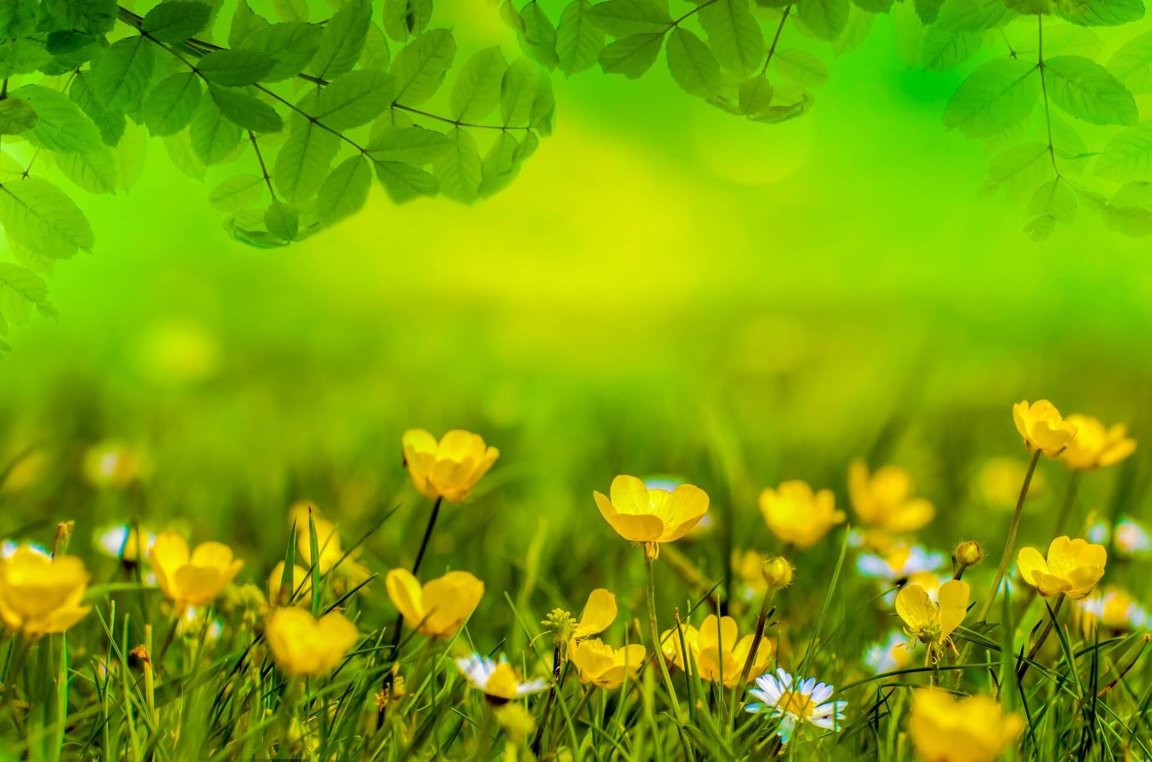 Take action on Earth Day, April 22, and everyday to preserve and protect our natural environment and its animals. Picking up litter, removing invasive plants, cleaning up parks and roads, recycling programs and simply encouraging friends, family and youth to get outside to experience nature are just some of the efforts you can take to make a difference for the planet. As an individual, family or group, you can get involved in numerous ways to protect and preserve our planet and its animals.
Take action on Earth Day, April 22, and everyday to preserve and protect our natural environment and its animals. Picking up litter, removing invasive plants, cleaning up parks and roads, recycling programs and simply encouraging friends, family and youth to get outside to experience nature are just some of the efforts you can take to make a difference for the planet. As an individual, family or group, you can get involved in numerous ways to protect and preserve our planet and its animals.Volunteer: Volunteers are individuals who want to give back to our community, parents who want to be good stewards of the land and set examples for their children, retired people willing to share their wealth of knowledge, concerned citizens of all ages who want to learn more about conservation, and passionate people who enjoy the outdoors and want to spread the word about our natural treasures. Get active by joining a group, adopting a highway or cleaning up a park, river or creek.
Pickup Litter: Don’t litter. Trash tossed carelessly outside washes into storm drains or creeks, which empty into rivers that eventually flow to the oceans. Trash negatively affects the habitat of aquatic environments causing death and injury to birds, fish, mammals, turtles and other species through swallowing and entanglement. Common litter includes plastic bags, paper, candy wrappers, fastfood packaging, bottle caps, glass bottles, plastic six-pack rings and plastic straws. Spend one hour picking up litter. Organize a team of family, friends, or co-workers to pickup litter. Enjoy making a difference, getting exercise, working with others and having cleaner surroundings.
Reduce, Reuse, Recycle: Recycling turns materials that would otherwise become waste into valuable resources. Collecting used bottles, cans and newspapers and taking them to a collection site is just the first in a series of steps that generates a host of financial, environmental and social returns. Reuse glass and plastic bottles. Coffee cans and buckets can be used as plant containers. Milk jugs with holes punched in the bottom can keep newly planted trees watered. Newspaper can be used to wrap gifts or as packaging material when shipping. Old clothes can be used as rags. Reuse plastic bags to line trashcans or to pickup animal waste. Avoid purchasing items that are over packaged. Use a reusable shopping tote to reduce plastic waste. Opt for a reusable water bottle as opposed to one-time-use plastic bottles. Reuse “disposable” food containers. Refuse to buy products that are not environmentally responsible.
Go Outside: Reconnecting with nature encourages a healthier lifestyle and helps to ensure future generations appreciate the natural world around them. Get outside and enjoy nature and wildlife. Experiencing nature can be as simple as visiting a park, bird watching in your own backyard, hiking in a forest, or watching for wildlife in a nature preserve. Watching wildlife is an extremely easy, fun and free way to enjoy the environment, spend family time or just to relax. Don’t pick flowers or collect wild creatures for pets. Leave animals and plants where you find them.
Plant Native: How ‘green’ is your garden? Ensure that it is truly sustainable by planting seeds of wildflowers native to your region for low-maintenance blooms next spring and all summer long. Not only will they thrive — they’ll support native birds, insects and other pollinators that depend on familiar, home-grown species for a healthy ecosystem. Plant native fruit and ornamental trees. Look for native and/or heirloom plants and seeds when planting a garden.
Create a Habitat: Habitat is the collective term for the food, water, shelter and nursery areas that all wildlife need to survive. The loss of habitat is one of the greatest threats facing wildlife today. Many habitat features can be added to an existing property, such as a garden, wetland pond, or nesting boxes.
Prevent Stormwater Runoff: Poor water quality can harm fish, wildlife and their habitat. Many things are known to cause poor water quality, including sedimentation, runoff, erosion and pesticides. All vehicle fluids are toxic and extremely harmful to the environment. Recycle used oil in a clean, sealed, plastic container. Keep litter, animal waste and leaves out of storm drains, ditches and creeks. Deliver old paint, pesticides, solvents and batteries to a hazardous waste drop off facility. Pouring hazardous substances down a storm drain, onto the ground or into a creek creates a danger to all, as well as animals and the environment. Yard waste, such as grass clippings, tree trimmings and leaves, can be composted and used for fertilizer around your property.
Protect Pollinators: Many pollinators are in decline. There are simple things you can do at home to encourage pollinator diversity and abundance, such as planting a pollinator garden. Choose native plants that flower at different times of the year to provide nectar and pollen sources throughout the growing season. Plant in clumps, rather than single plants, to better attract pollinators. Provide a variety of flower colors and shapes to attract different pollinators.
Reduce Bird Strikes: As many as 1 billion birds die each year due to collisions with windows in homes and office buildings. The primary cause of birds colliding with glass is due to reflection. Objects or ornaments hanging in windows will reduce the reflection by breaking it up. Hang ribbons or other material in strips on the outside of windows for the full width of the glass. Keep houseplants away from windows as they can appear like trees.
Clean Up Animal Waste: Clean up after your animals to reduce pollution in creeks and rivers. Poor water quality harms fish, wildlife and their habitat. Waste may be washed into waterways by rain or melting snow carrying disease causing organisms.
Endangered Species
16 Apr, 2025
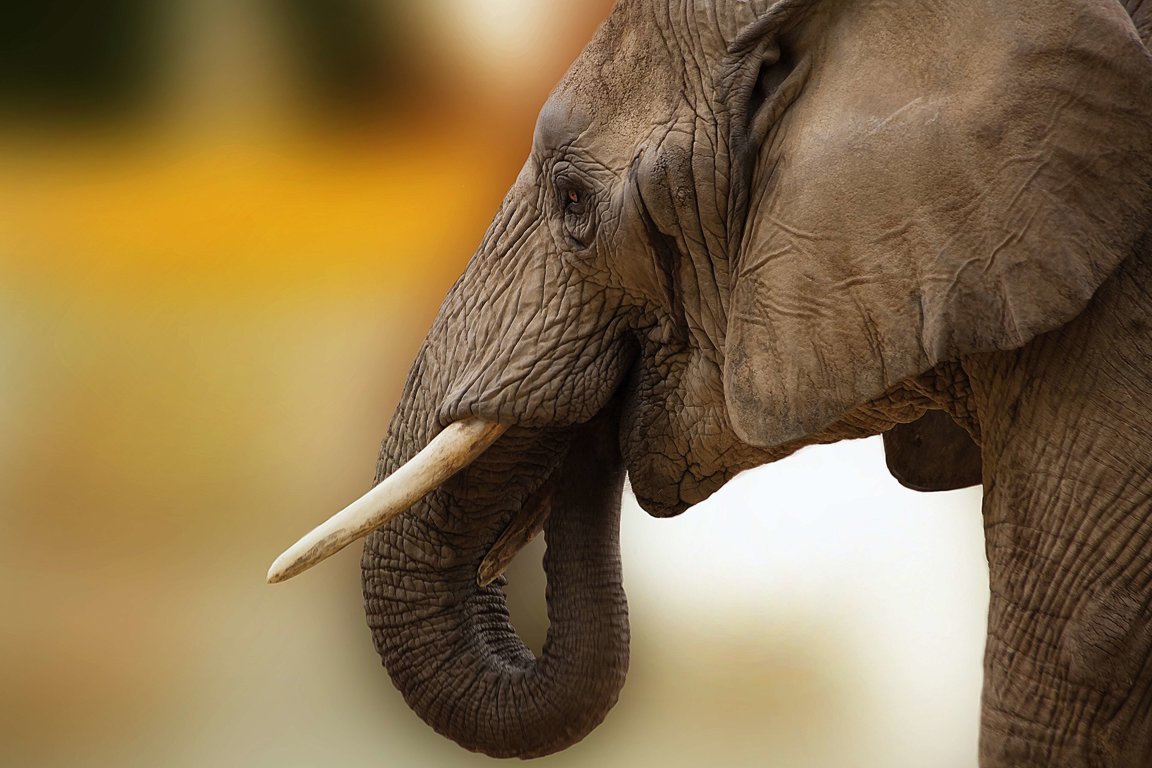 Thousands of plants and animals are endangered, and thousands more are threatened. Many of the reasons certain animals are disappearing forever are because of human activities.
Thousands of plants and animals are endangered, and thousands more are threatened. Many of the reasons certain animals are disappearing forever are because of human activities.FIVE MAJOR CAUSES
The mnemonic HIPPO represents the five major causes of declining wildlife biodiversity:
H - Habitat Loss
I - Invasive Species
P - Pollution and Pesticides
P - Population Growth (human) and the Pet Trade
O - Over-hunting and Over-collecting
Habitat Loss results from human activities and land development. Many animal species are in decline because their environment is no longer able to fulfill their basic requirements. All species require food, water, shelter, space and the ability to find a mate and have children. Some species require small habitats, while others need large areas to successfully survive. Animal agriculture is the leading cause of habitat loss and deforestation.
Invasive Species are plants and animals transported from one country or region to another and introduced into the wild. While most do not survive in a foreign world, some assimilate into their new world and thrive. Often they out-compete native plants and animals for their niche in the ecosystem, upsetting the balance of nature.
Pollution and Pesticides, in forms of garbage and trash, air and water pollution, soil contamination and noise and light pollution, harm ecosystems and wildlife. Pesticides are toxic and harm more than their target. Pollution harms the environment and animals.
Population Growth and the Pet Trade threaten countless animal species. As humans take more and more wilderness areas for agriculture, housing and industry, less land is available for wildlife. Native animals are often forced into less suitable habitats and can decline or disappear forever. Many “pets”, including fish, reptiles, spiders, birds, rodents and exotic mammals, are harvested from the wild.
Over-hunting and Over-collecting has impacted many endangered species, reeking havoc on ecosystems and eliminating entire species forever.
HOTSPOTS & COLDSPOTS
● Biodiversity Hotspots are regions with large numbers of species that do not live anywhere else in the world, where habitat destruction has occurred at alarming rates. Many organizations and agencies focus on saving these hotspots in an effort to do the greatest good and save the most species. Hotspots make up less than 2% of the planet.
● Coldspots, over 98% of the earth, are areas that have less species diversity but they need just as much help as areas with lots of biodiversity. In fact, some biodiversity coldspots are home to very rare plants and animals. Protecting these areas before too much destruction occurs prevents us from having to work backwards.
THE DOMINO EFFECT
All plants and animals have many complex intertwining links with other living things around them. Hippopotamus have birds that feed off the insects that grow on them. If the hippo were to become extinct, so would the birds…leading to further destruction as other species depend on the birds. This is referred to as Chains of Extinction, or the Domino Effect.
KEYSTONE SPECIES
A keystone species is a plant or animal that plays a crucial role in how an ecosystem functions. Without the keystone species, the ecosystem would be dramatically different or would not be able to survive. While all species in a habitat rely on each other, keystone species have a huge impact on their environment. Their disappearance would start a domino effect, leading to other species in the ecosystem also disappearing.
INDICATOR SPECIES
An indicator species is a plant or animal species humans focus on to gather information about an ecosystem. Their presence or absence in an environment can be a signal that all is well, or something is not right. Certain types of plants or animals may exist in a very specific area. If the species begins to disappear, this ecoregion may be shrinking and action may need to be taken to save the environment. Indicator species can tell humans about the health of the environment. Many are extremely sensitive to pollution or human interference and serve as a “miner's canary”.
UMBRELLA SPECIES
An umbrella species is a plant or animal species that has a wide range and requirements for living as high or higher than other animals in the habitat. If the umbrella species' requirements are met, then so are the needs of many other species in its ecosystem. The Monarch butterfly is an example of an umbrella species because of its lengthy migrations across North America, covering lots of ecosystems. Any protections given to the Monarch will also “umbrella” many other species and habitats.
FLAGSHIP SPECIES
Often times umbrella species are used by organizations and agencies to capture the public's attention for support for conservation efforts. These flagship species - such as pandas, whales, tigers, gorillas and butterflies - are species that the public finds captivating and are interested in helping. When the flagship species is helped, so are species in their ecosystems that the general public may find less appealing.
Pandas In Peril
15 Apr, 2025
 Like most endangered creatures, the giant panda has had to bear the brunt of man's frantic quest for development. No place embodies this phenomena more starkly than China, of which this furry animal is a native. The panda population in the plains of China have completely vanished over the millennia, and the only giant pandas remaining are those found in the Qinling Mountains of the Sichuan, Shaanxi and Gansu provinces of Central China. These rain-soaked forests are at elevations from 5,000 to 8,000 feet and are generally covered in clouds and mist.
Like most endangered creatures, the giant panda has had to bear the brunt of man's frantic quest for development. No place embodies this phenomena more starkly than China, of which this furry animal is a native. The panda population in the plains of China have completely vanished over the millennia, and the only giant pandas remaining are those found in the Qinling Mountains of the Sichuan, Shaanxi and Gansu provinces of Central China. These rain-soaked forests are at elevations from 5,000 to 8,000 feet and are generally covered in clouds and mist.An adult male panda can weigh over 350 lbs, the female 275 lbs, and measure from 2 to 3 feet in height up to its shoulders. With its huge round white-colored body, two black patches around the eyes, black ears and stout black legs, the panda looks very much like an over-bloated raccoon.
The breeding age of the pandas starts from about 4 to 8 years and remains reproductive up to the age of 20. The female gives birth between 95 to 150 days, and the panda cub is probably one of the most difficult creatures to raise. Almost blind, hairless and pink, the baby is 1/900th the size of its mother. The cubs remain without eyesight for a period of six to eight weeks and are just able to move around after three months.
Bird meat, rodents, carrion and grass form a part of the animal's diet, but these are secondary. Their primary diet is bamboo, which is available in plenty in the Qinling Mountains. The panda's huge round face is suggestive of a powerful set of jaws which itself is an adaption to a coarse diet such as the bamboo. The flowers of the bamboo have more nutrition than the stems. Re-flowering of the bamboos is a slow natural process and there is a fragile balance between it and the slow reproductive rate of the pandas – something that has evolved over a million years in these mountains.
Changes in climate threatens to upset this delicate balance. It presents a genuine threat to the habitat of the panda. A 3 to 4 degree rise in temperatures could easily wipe out half the bamboo forests and leave the panda starving. Scientists opine that owing to the serious damage to the ozone layer, a fallout of China's manic industrialization drive, temperatures could rise up to such a point that there would be none of these precious bamboo forests left after 50 to 100 years. While bamboo could be cultivated in other areas, it would have none of the nutritional value of the Qinling mountain bamboo. There's still plenty of bamboo being cultivated in China, but for the panda to move out of its habitat in search of its vital food will put it in direct confrontation with humans.
Poaching is another menace, and pandas have been captured over the years for exhibition in private zoos. Their pelts fetch a high price in the illegal wildlife trade. Giant pandas sometimes end up in traps laid for other animals and receive grievous injuries. The Chinese government has put in place strict penalties for panda poaching that entails a ten-year sentence and confiscation of property.
Authorities in the Shaanxi Province enacted a regional law in 2007 that marked the Qinling Mountains as a protected zone. The law also states that all development projects in the vicinity of the zone will be assessed for their impact on the ecology and bio-diversity of the region. The Natural Forest Protection Project, implemented by the Chinese Government, has gone a long way in securing a future for the pandas.
Despite these efforts, China has been criticized for showing little interest in true conservation. The Chinese government rents pandas to zoos around the world. Few pandas have been born in zoos, and only a handful of those have been released into the wild; the majority of which did not survive. The enormous amount of money spent on panda breeding programs has been criticized, as the money could be used much more effectively by saving wild habitats.
Zoo pandas suffer the same stresses all wild animals face in captivity. They are moved from zoo to zoo, usually more for political and economic reasons rather than genetic management. Their natural habitat can never be truly simulated, leading to changes in behavior, prolonged inactivity, health problems, stereotypical behavior and lower levels of immunity creating higher susceptibility to illness and disease.
Animal advocates argue that the pandas' welfare should be put above propaganda and profits; pandas should be put in refuges out of the public eye to eliminate the stress they endure due to such exposure.
Wildlife organizations have had an impact by establishing panda natural reserves and conservation programs. Integrating reserves with forest farms and bamboo corridors enable pandas to forage for more food and come into contact with new breeding mates.
A 17 percent rise in the panda population has been witnessed in the past decade. From a count of 1,596 individuals in 2003, it has risen to 1,864. Of these, though, 50 pandas are condemned to captivity in 18 zoos spanning 13 countries.
Why Americans Waste So Much Food
13 Apr, 2025
 Even though American consumers throw away about 80 billion pounds of food a year, only about half are aware that food waste is a problem. Even more, researchers have identified that most people perceive benefits to throwing food away, some of which have limited basis in fact.
Even though American consumers throw away about 80 billion pounds of food a year, only about half are aware that food waste is a problem. Even more, researchers have identified that most people perceive benefits to throwing food away, some of which have limited basis in fact.A recent study found that 53 percent of respondents said they were aware that food waste is a problem. This is about 10 percent higher than a previous study, which indicates awareness of the problem could be growing.
But it is still amazingly low. If we can increase awareness of the problem, consumers are more likely to increase purposeful action to reduce food waste. You don’t change your behavior if you don’t realize there’s a problem in the first place.
Generally, people consider three things regarding food waste. They perceive there are practical benefits, such as a reduced risk of foodborne illness, but at the same time they feel guilty about wasting food. They also know that their behaviors and how they manage their household influences how much food they waste.
How Americans Think About Food Waste:
- Perceived benefits: 68 percent believe that throwing away food after the package date has passed reduces the chance of foodborne illness, and 59 percent believe some food waste is necessary to be sure meals are fresh and flavorful.
- Feelings of guilt: 77 percent feel a general sense of guilt when throwing away food. At the same time, only 58 percent understand that throwing away food is bad for the environment, and only 42 percent believe wasted food is a major source of wasted money.
- Control: 51 percent believe it would be difficult to reduce household food waste and 42 percent say they don’t have enough time to worry about it. Still, 53 percent admit they waste more food when they buy in bulk or purchase large quantities during sales. At the same time, 87 percent think they waste less food than similar households.
Many people feel they derive some type of benefit by throwing food away, but many of those benefits are not real. For example, they misunderstand “Sell by” and “Use by” dates on food packages. Only in rare circumstances is that date about food safety.
Food waste is the largest source of municipal solid waste in the U.S. and the most destructive type of household waste in terms of greenhouse gas emissions. Consumers can help by reducing food waste.
Trophy Hunting: Money & Egotism Over Wildlife Survival
13 Apr, 2025
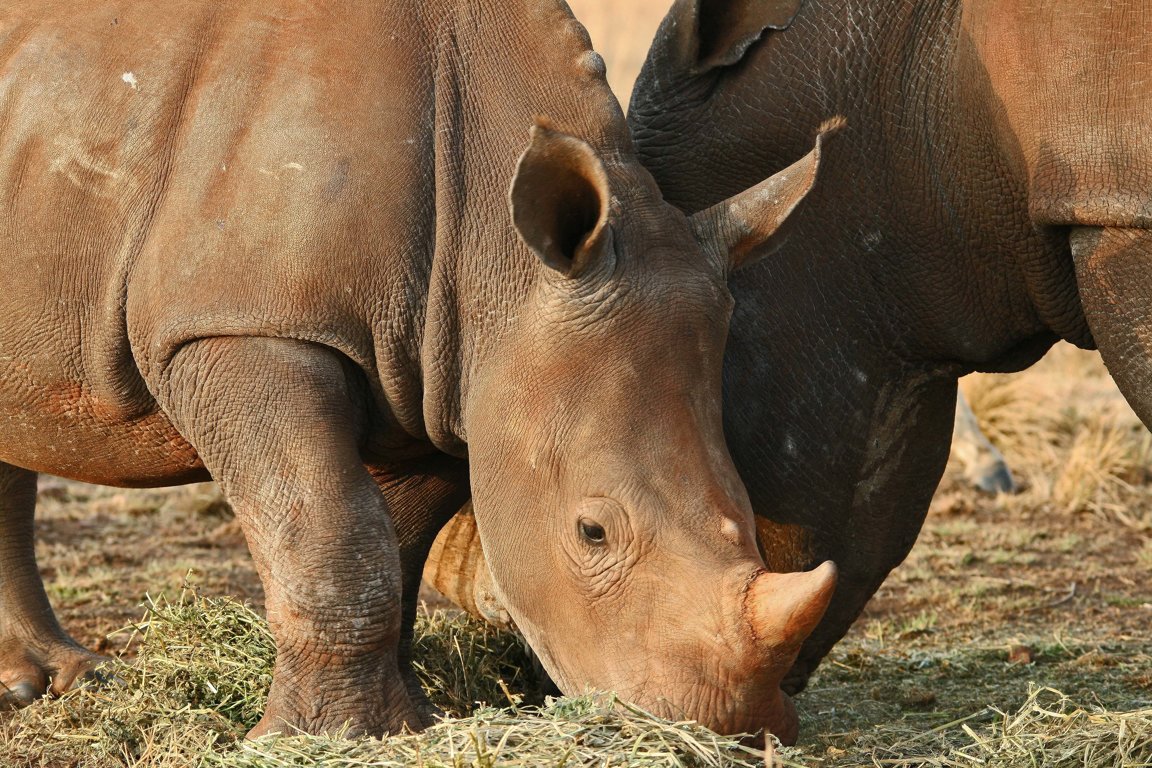 Trophy hunting is the killing of an animal for recreation. Parts of the animal, in most cases the head or skin, are kept by the hunter as a display item or “trophy”. The hunters glamorize the killing of animals, believing it demonstrates their virility, prowess and dominance.
Trophy hunting is the killing of an animal for recreation. Parts of the animal, in most cases the head or skin, are kept by the hunter as a display item or “trophy”. The hunters glamorize the killing of animals, believing it demonstrates their virility, prowess and dominance.Trophy hunting is an elitist hobby for millionaires and billionaires who pay huge fees to kill large, exotic and rare animals. Many of these hunters are members of powerful and wealthy organizations that promote the slaughter of rare and sensitive species with elaborate award programs.
Trophy hunting has accounted for the lives of countless wild and exotic animals belonging to innumerable species. Cash-strapped governments, many in developing countries, are paid big bucks by wealthy patrons for the right to hunt in many of their game reserves. But these countries and rural communities derive little benefit from trophy hunting revenue. Wildlife-based eco-tourism offers much more economic impact to communities.
A majority of trophy hunters who visit Africa are from the U.S. Trophy hunting also occurs in the U.S., Canada, Mexico, New Zealand, Spain and Argentina, as well as over 100 other countries.
In most cases, the hunters are near amateurs and are incapable of a quick kill. This leaves their prey injured and open to the agonies of a long and painful death. Many of the younger animals are orphaned, their family structures thrown asunder by the wanton killing.
Trophy hunting organizations promote their “sport” as “conservation”, stating they contribute conservation funds through the purchase of hunting permits. But research shows that funds reaching the local communities are miniscule. Studies have determined that only 3 percent of funds from trophy hunting reaches the rural communities where the hunting occurs. Middlemen, and large companies and organizations, take the majority share of sport hunting proceeds.
In reality, the last thing on the minds of trophy hunters is conservation. In fact, the more endangered or rare a species, the higher the price of the permit and bigger the thrill to hunt it down. Bragging rights is the name of the game. It's about who made the biggest and best kill, and the number of animal parts like heads, horns, tusks and other body parts they carted away from such hunts.
Many animals killed by trophy hunters are threatened or endangered species. Among them are the African lion, African elephant, African rhino, and African leopard. Hunting quotas are set without scientific understanding of the animal populations and their ability to recover.
Trophy hunting is a major threat to the survival of the African lion. What the killing of a lion can do by way of disruption in the day-to-day existence of a pride is beyond the comprehension of trophy hunters. Trophy hunting is having a devastating effect on leopards. That the African elephant could soon become extinct is least of their concerns. Rhinos are in serious danger of extinction. If rhino hunting is not stopped, the world could lose African rhinos forever.
Many non-native species, that are harmful to the native environment, are also kept in the wild in numerous countries for the benefit of trophy hunters. Some animals are even kept in fenced areas with no chance of escaping. “Canned hunting” poses serious threats of disease transmission to wild populations.
Organizations such as the Safari Club International (SCI) hold events like the "Grand Slam", where the killing of select species can earn one the coveted "Grand Slam" title. The Africa Big Five, that accounts for the lives of animals like the elephant, lion, leopard, rhino and buffalo, offers a prestigious title for trophy hunters. North American Twenty Nine is another contest that involves hunting down all species of bison, bear, caribou, moose and deer. To win the highest award, “World Hunter of the Year,” a hunter kills over 300 animals across the globe.
The entire worldwide list of animals to be slaughtered by SCI members contains a frighteningly long list of at least 1,100 species of wildlife. The organization promotes a warped logic that such killings benefit conservation. Guided by this false perception, many museums around the world tacitly facilitate the killing and import of endangered species.
Killing animals is not conservation – pure and simple. To say otherwise is to distort the gruesome reality of the situation. Extravagant trophy hunting of endangered species is the opposite of conservation. Trophy hunting is decimating wildlife populations around the planet. It glamorizes the death and violence of wildlife. Fortunes are made on the backs of millions of animals who are already struggling to survive in a human dominated world.
Genuine conservation organizations and animal advocates around the world are calling on authorities to end trophy hunting enterprises and to stop the slaughter of remarkable and rare animals.
How Oil Harms Animals & Plants
12 Apr, 2025
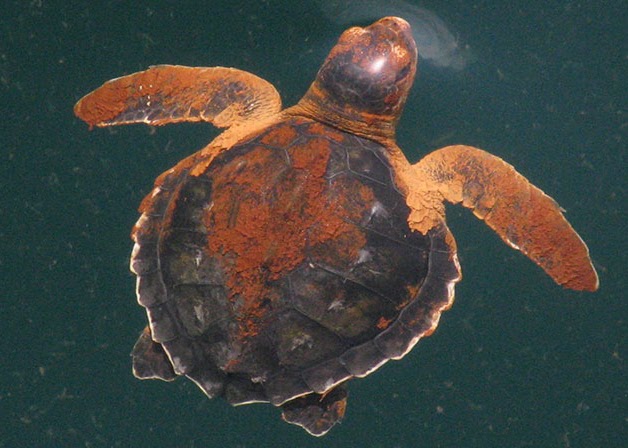 In general, oil spills can affect animals and plants in two ways: from the oil itself and from the response or cleanup operations. Understanding both types of impacts can help spill responders minimize overall impacts to ecological communities and help them to recover much more quickly.
In general, oil spills can affect animals and plants in two ways: from the oil itself and from the response or cleanup operations. Understanding both types of impacts can help spill responders minimize overall impacts to ecological communities and help them to recover much more quickly.Spilled oil can harm living things because its chemical constituents are poisonous. This can affect organisms both from internal exposure to oil through ingestion or inhalation and from external exposure through skin and eye irritation. Oil can also smother some small species of fish or invertebrates and coat feathers and fur, reducing birds' and mammals' ability to maintain their body temperatures.
What Creatures Are Most Affected by Oil Spills?
Since most oils float, the creatures most affected by oil are animals like sea otters and seabirds that are found on the sea surface or on shorelines if the oil comes ashore. During most oil spills, seabirds are harmed and killed in greater numbers than other kinds of creatures. Sea otters can easily be harmed by oil, since their ability to stay warm depends on their fur remaining clean. If oil remains on a beach for a while, other creatures, such as snails, clams, and terrestrial animals may suffer.
What Measures Are Taken When an Animal Comes in Contact with Oil?
Most states have regulations about the specific procedures to follow. Untrained people should not try to capture any oiled bird or animal. At most U.S. spills, a bird and/or mammal rehabilitation center is set up to care for oiled animals.
What Type of Spilled Oil Causes the Most Harm?
The type of oil spilled matters because different types of oil behave differently in the environment, and animals and birds are affected differently by different types of oil. However, it's not so easy to say which kind is worst.
First, we should distinguish between "light" and "heavy" oils. Fuel oils, such as gasoline and diesel fuel, are very "light" oils. Light oils are very volatile (they evaporate relatively quickly), so they usually don't remain for long in the aquatic or marine environment (typically no longer than a few days). If they spread out on the water, as they do when they are accidentally spilled, they will evaporate relatively quickly.
However, while they are present, light oils present two significant hazards. First, some can ignite or explode. Second, many light oils, such as gasoline and diesel, are also considered to be toxic. They can kill animals or plants that they touch, and they also are dangerous to humans who breathe their fumes or get them on their skin.
In contrast, very "heavy" oils (like bunker oils, which are used to fuel ships) look black and may be sticky for a time until they weather sufficiently, but even then they can persist in the environment for months or even years if not removed. While these oils can be very persistent, they are generally significantly less acutely toxic than lighter oils. Instead, the short-term threat from heavy oils comes from their ability to smother organisms. Over the long-term, some chronic health effects like tumors may result in some organisms.
Also, if heavy oils get onto the feathers of birds, the birds may die of hypothermia (they lose the ability to keep themselves warm). We observe this same effect if sea otters become oiled. After days or weeks, some heavy oils will harden, becoming very similar to an asphalt road surface. In this hardened state, heavy oils will probably not harm animals or plants that come in contact with them.
In between light and heavy oils are many different kinds of medium oils, which will last for some amount of time in the environment and will have different degrees of toxicity. Ultimately, the effects of any oil depend on where it is spilled, where it goes, and what animals and plants, or people, it affects.
Deserts
11 Apr, 2025
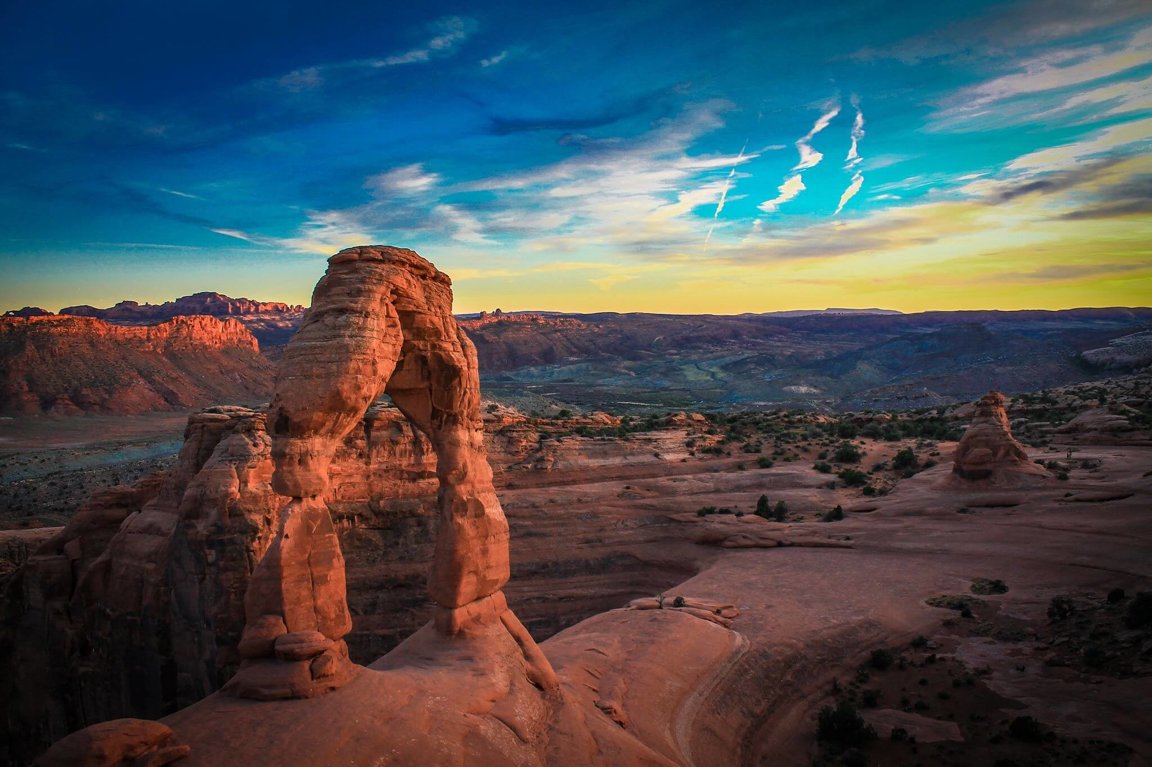 Desert biomes receive very little rain and cover about one-fifth of the planet's surface. They are divided into four sub-habitats based on their location, aridity, climate and temperature: arid deserts, semi-arid deserts, coastal deserts and cold deserts.
Desert biomes receive very little rain and cover about one-fifth of the planet's surface. They are divided into four sub-habitats based on their location, aridity, climate and temperature: arid deserts, semi-arid deserts, coastal deserts and cold deserts.● Arid deserts are hot and dry and are located at low latitudes throughout the world. Temperatures are warm all year and hottest during the summer. Arid deserts receive little rainfall, and most rain that does fall usually evaporates. Arid deserts are located in North America, South America, Central America, Africa, Australia and Southern Asia.
● Semi-arid deserts are usually not as hot and dry as arid deserts. They have long, dry summers and cool winters with some rain. Semi arid deserts are found in North America, Europe, Asia, Newfoundland and Greenland.
● Coastal deserts are usually located on the western edges of continents at approximately 23°N and 23°S latitude, the Tropic of Cancer and the Tropic of Capricorn. Cold ocean currents run parallel to the coast, producing heavy fogs. Despite high humidity in coastal deserts, it rarely rains.
● Cold deserts have low temperatures and long winters and are found above the treelines of mountain ranges and in the Arctic and Antarctic. They experience more rain than other deserts. Many locations of the tundra are cold deserts.
Desert animals include coyotes, kangaroo rats, spiders, meerkats, roadrunners, reptiles, toads, snakes, pronghorn, birds and bats.
Dry and baron landscapes, deserts receive intense sunshine and little rain. They are places of extremes, with a greater range of temperatures throughout the day than any other habitats. Temperatures range from boiling in the middle of the day, to freezing at night.
The two main types of deserts are true deserts (hot deserts) and semi-deserts.
True deserts are located on either side of the tropics.
Semi-deserts occur on every continent, usually far from the tropics. Semi-deserts receive at least twice as much rain each year than true deserts.
Deserts are formed from large fluctuations in temperature between day and night which puts strain on rocks. The stress causes the rocks to break into pieces. Occasional downpours of rain cause flash floods. The rain falling on hot rocks can cause them to shatter. The rubble is strewn over the ground and further eroded by the wind. Wind-blown sand grains further break down stones, causing more sand. Rocks are smoothed down, and the wind sorts sand into deposits. The grains end up as sheets of sand.
Other deserts are flat, stony plains where all the fine material has been blown away leaving an area of smooth stones. These deserts are called desert pavements and little further erosion takes place. Some deserts include rock outcrops, exposed bedrock and clays once deposited by flowing water. Oases occur where there are underground sources of water in the form of springs and seepages from aquifers.
A unique desert is the Gobi desert in Asia which is located across China and stretches up to the Siberian Mountains where winters are very cold. Despite the cold winters, the mountains block rain-clouds from reaching the desert area.
A variety of plants and animals live in desert habitats. Plants tend to be tough and wiry with small or no leaves. Some plants germinate, bloom and die in the course of a few weeks after rainfall. Some long-lived plants survive for years with deep roots that tap into underground moisture.
Most animals are nocturnal, coming above ground or out of the shade at night when temperatures are cooler. Reptiles, insects and small birds are the most common animals in true deserts. Mammals are more common in semi-deserts, where plant life is more plentiful.
Animals of the deserts are adapted to dry and arid conditions. They are efficient at conserving water, extracting most of their needs from their food and concentrating their urine. The addax antelope, dik-dik, Grant's gazelle and oryx never need to drink. The thorny devil in Australia sucks water through channels in its body located from its feet to its mouth. The camel minimizes its water loss by producing concentrated urine and dry dung, and is able to lose 40% of its body weight through water loss without dying of dehydration. Camels have humps of fatty tissue that concentrate body fat in one area, minimizing the insulating effect fat would have if distributed over their whole bodies. Birds are able to fly to areas of greater food availability as the desert blooms after local rainfall, and can fly to faraway waterholes. Carnivores obtain much of their water needs from the body fluids of their prey.
Flies, beetles, ants, termites, locusts, millipedes, scorpions and spiders have hard cuticles which are impervious to water and many lay their eggs underground where their young develop away from the surface temperature extremes. Some arthropods make use of the ephemeral pools that form after rain and complete their life cycle in a matter of days.
Reptiles do not sweat, so they shelter during the heat of the day. In the first part of the night, as the ground radiates the heat absorbed during the day, they emerge and search for prey. Some snakes move sidewards to navigate high sand-dunes. Even amphibians have adapted to desert habitats, spending the hot dry months in deep burrows where they shed their skins numerous times to create cocoons around them to retain moisture.
Some animals remain in a state of dormancy for long periods, becoming active again when the rare rains fall. They then reproduce rapidly while conditions are favorable before returning to dormancy.
Deserts habitats have been the least affected by human activities, remaining relatively untouched. Threats do include extraction of oil from the sand and grazing farm animals that deplete desert plants, threatening wildlife that rely on those plants. Desertification can be caused by tilling for agriculture, overgrazing and deforestation.
Threats To Animals
10 Apr, 2025
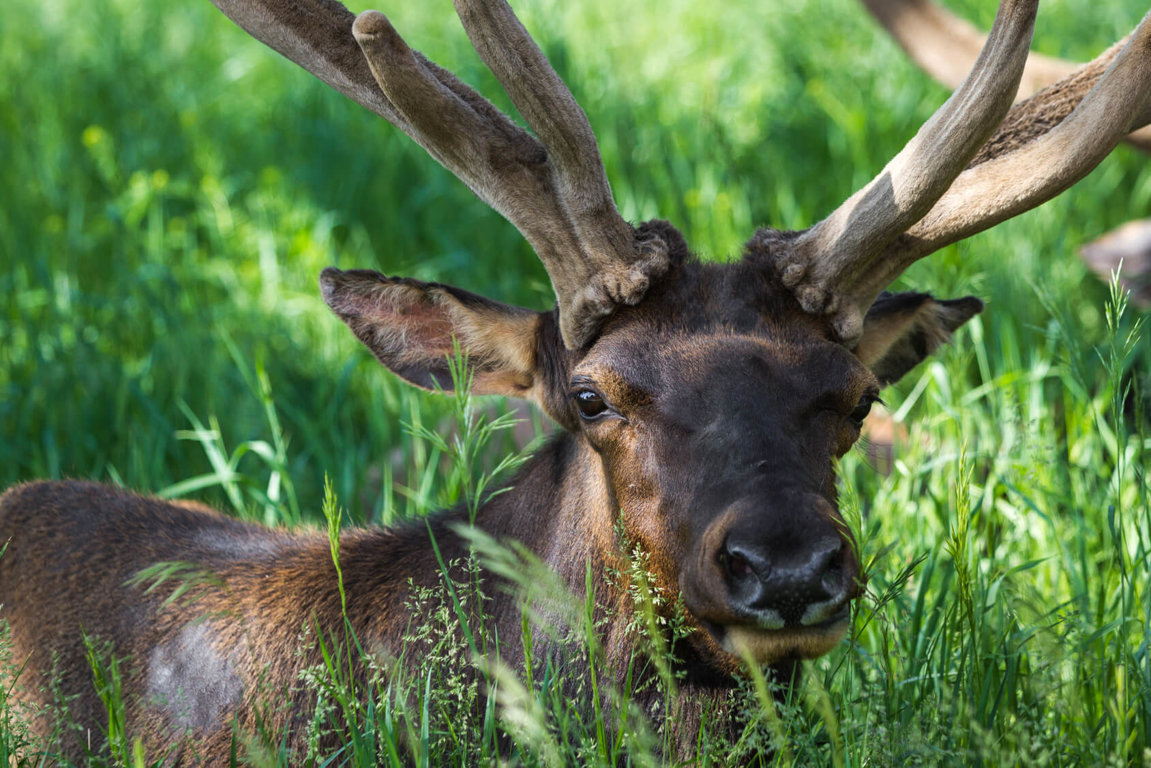 Surviving in an environment of continuous threat and stress is a serious challenge for most living species. Living organisms, in whatever form, need to adapt to changes in the weather, climate and all sorts of changes in the environment. Add to this the natural calamities in the form of floods, storms, fires and volcanic bursts and their aftermath. When new lifeforms enter their ecosystems, pressure on existing species mount.
Surviving in an environment of continuous threat and stress is a serious challenge for most living species. Living organisms, in whatever form, need to adapt to changes in the weather, climate and all sorts of changes in the environment. Add to this the natural calamities in the form of floods, storms, fires and volcanic bursts and their aftermath. When new lifeforms enter their ecosystems, pressure on existing species mount.Dangers can be parasitic or predatory in nature. Challenges to adaptation can be in the form of diseases or the very complexity of biological changes themselves.
After millions of years of adapting to their environments, animals faced a new kind of threat - the advent of human beings. The effect of humans on the planet has been profound and has threatened the existence of all kinds of organisms to a degree that has caused scientists to believe that the Earth is beginning to witness extinction on a mass scale.
Being a a part of nature, the dangers arising from human actions are extensions of natural threats. But the threats from mankind are within human control and can be curbed by changes in behavior. Humans are in a position to realize the consequences of their actions on the environment and can easily make changes in behavior that would affect the future health of the planet in a positive way.
Human Threats To Animals
Destruction of habitat and fragmentation: Destruction and fragmentation of animal habitats for the purpose of agriculture, urban development, building of hydro-electric projects and other self-serving uses are major threats to the Earth’s wildlife.
Effects on global climate: Large scale emissions from fossil fuel burning and excessive flaring of gas have wrought serious damage to the Earth's atmosphere, especially the ozone layer, causing climate changes in many parts of the globe.
Introduction of new and invasive species: Loss of endemic species have been caused by introduction of new species into their ancient habitats.
Hunting and poaching: Hunting animals for sport and poaching them for profit as part of the illicit wildlife trade are among the major threats to wildlife.
Effects of pollutants: Industrial wastes, fertilizers, and pesticides have infiltrated and consumed entire habitats of all forms of living creatures and organisms.
Accidents: Loss of habitat causing animals to venture onto freeways and other manmade obstacles is also a common occurrence. More birds are being killed by a growing traffic in aviation and from colliding into windows.
Monkey Invasion
9 Apr, 2025
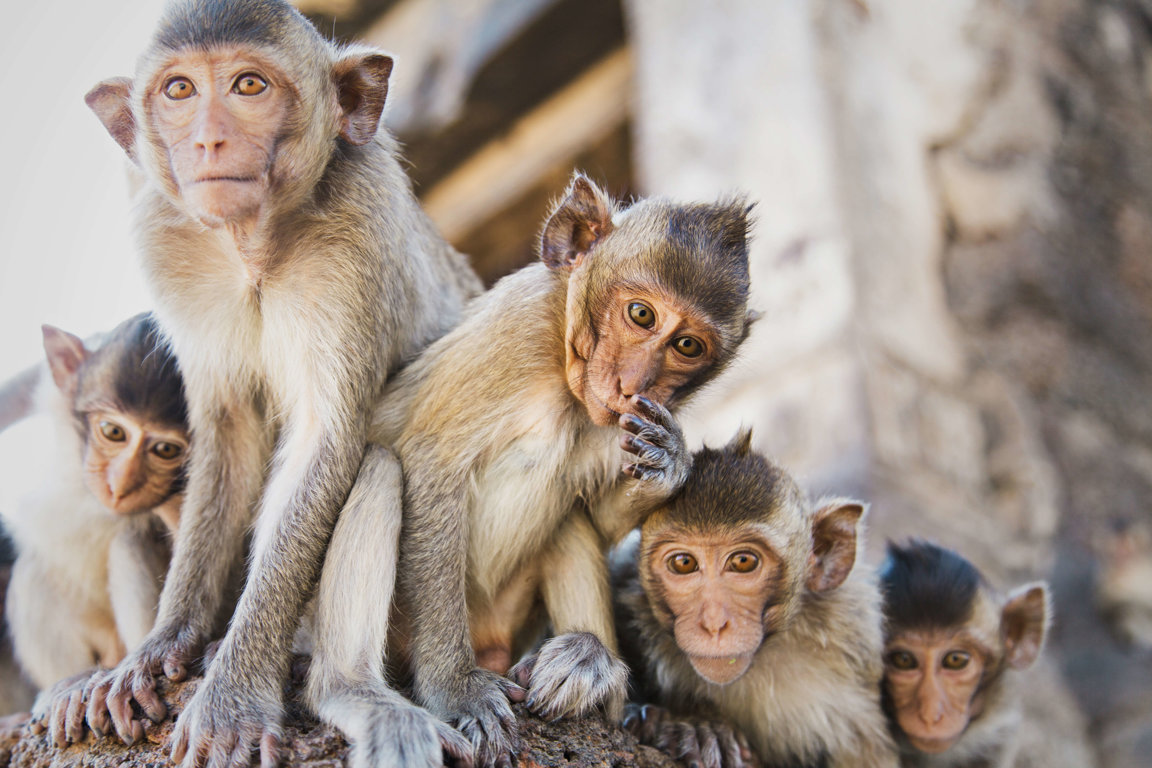 Monkeys have long been a common sight in temples and tourist destinations around the world. These intelligent animals once stayed away from urban hubs, restricting themselves to the fringes of big cities. But deforestation, animal agriculture, industrialization and fast expanding cities is reducing monkey habitat at an alarming rate. As a result, many species of monkeys are invading cities for food, shelter and water.
Monkeys have long been a common sight in temples and tourist destinations around the world. These intelligent animals once stayed away from urban hubs, restricting themselves to the fringes of big cities. But deforestation, animal agriculture, industrialization and fast expanding cities is reducing monkey habitat at an alarming rate. As a result, many species of monkeys are invading cities for food, shelter and water.Many monkeys have long taken to temples, where they are often protected and fed. From these temples they radiate out to nearby forests. But urbanization has invaded temple areas, bringing the city to the monkeys.
As natural monkey habitats are continuously destroyed, monkeys are loosing their fear of humans. In search of new food sources, they raid farms, beg for food, and steal from homes and businesses. Urban areas offer monkeys easy access to shelter, food, water and large trees, causing population explosions. Telephone and electric wires give them easy access throughout the urban jungles.
Monkeys are now as plentiful as squirrels in many Asian cities. They hang out in train stations, beg at the side of roads, dig through trash cans, and steal food from humans.
Cows, stray dogs and cats have roamed the streets of the capital city of India, New Delhi, for centuries. Now, monkeys have taken over. There are tens of thousands of rhesus macaques skirting rooftops of buildings, darting through work places, raiding kitchens, scattering files and attacking workers. Instances of human-monkey conflicts include monkeys biting people, snatching foodstuffs, picking pockets, and even drunken monkeys misbehaving. Monkeys have spread to other Indian cities of northern states like Madhya Pradesh and Rajasthan. Langurs, another species of monkey, are now seen on the rooftops of Jaipur, the capital city of Rajasthan. Ironically, the langur was brought in to scare off the rhesus macaques.
While the rhesus macaques are having a free run of many Indian and Asian cities, the baboons have their sights set on the affluent neighborhoods of Cape Town, South Africa. Man and baboon have co-existed in the Western Cape for centuries, but tolerance for the creature seem to be running thin. Loss of habitat from development and urbanization is turning this once-friendly creature into an aggressive one. Baboons are breaking into glitzy estates on the Cape, raiding kitchens for food, rummaging into garbage cans and stealing whatever they think may be of use to them. Even restaurants haven't been spared.
Many urban communities feed the monkeys, often compounding the problem. The monkeys quickly loose their fear of humans and become dependent on human handouts. Thousands of monkeys went on a rampage in northern Thailand when the council ran out of rice for the monkeys after a drought. Shops, homes and restaurants were invaded by gangs of hungry monkeys.
Snow monkeys in Japan raid farms, invade towns and break into homes and businesses to steal food. Forestry has reduced their wild food sources, leaving the monkeys little choice.
While monkeys are not native to the US, vervet monkeys have made a tiny patch of forest near the Fort Lauderdale/Hollywood International Airport their home. They have survived in the area for generations. Silver River, in central Florida, is home to rhesus macaques that were introduced to the central Florida wetlands to drum up tourism. They have lived there for decades and are now moving as far north as Jacksonville and as far south as Orlando.
Finding Solutions
Attempts to reduce urban monkey populations have ranged from outright elimination, to forced migration and awareness campaigns not to feed monkeys.
Many farmers have resorted to shooting monkeys to save their crops. A more humane attempt to avoid monkey damage is switching from fruit and vegetable crops to growing crops less likely to attract monkeys.
Culling methods are not only inhumane, but also ineffective. New monkeys soon move in from surrounding areas. Their numbers swell quickly to match the original populations. Culling also results in the monkeys becoming more aggressive.
Capturing city monkeys in cages, and keeping them in captivity before release, causes extreme stress to the animals. Relocation of monkeys only results in new troops entering the area. Diseases can also be spread by monkeys from one area to another.
Large-scale sterilization of monkeys has yet to be attempted. At least 1/3rd of the population needs to be sterilized to arrest the rate of population growth. Capturing enough monkeys to be effective is both challenging and expensive. Oral contraceptives for monkeys, that can be administered through food, are in the works.
In South Africa, "virtual fences" on the perimeters of cities are being created. These virtual fences are a line of speakers that emit sounds of predatory beasts, like the lion, to keep baboons at bay. Whether that will be a long term solution is a matter of conjecture.
Conservationists are proposing filling monkey habitat with food sufficient enough to dissuade them from venturing into cities. Some areas have proposed mass planting of trees to create green islands to provide habitation to monkeys.
To help save monkey and other wildlife habitats, humans must also shift from animal based agriculture to plant based farming. Expanding animal farming is the leading cause of deforestation, resulting in ever-increasing habitat loss. Animal agriculture takes up over 40% of the planet. 56 million acres of land are used to feed factory farmed animals, while only 4 million acres produce plants for human consumption. It takes 20 times less land to feed someone on a plant based diet than it does to feed meat eaters.
Urban monkey challenges have been created by humans, and must be solved by humans. Monkeys are not the villain. Monkey habitats and food-sources have been greatly depleted in the wild by irresponsible human activity. Coexistence is the only solution.
Aquatic Habitats
9 Apr, 2025
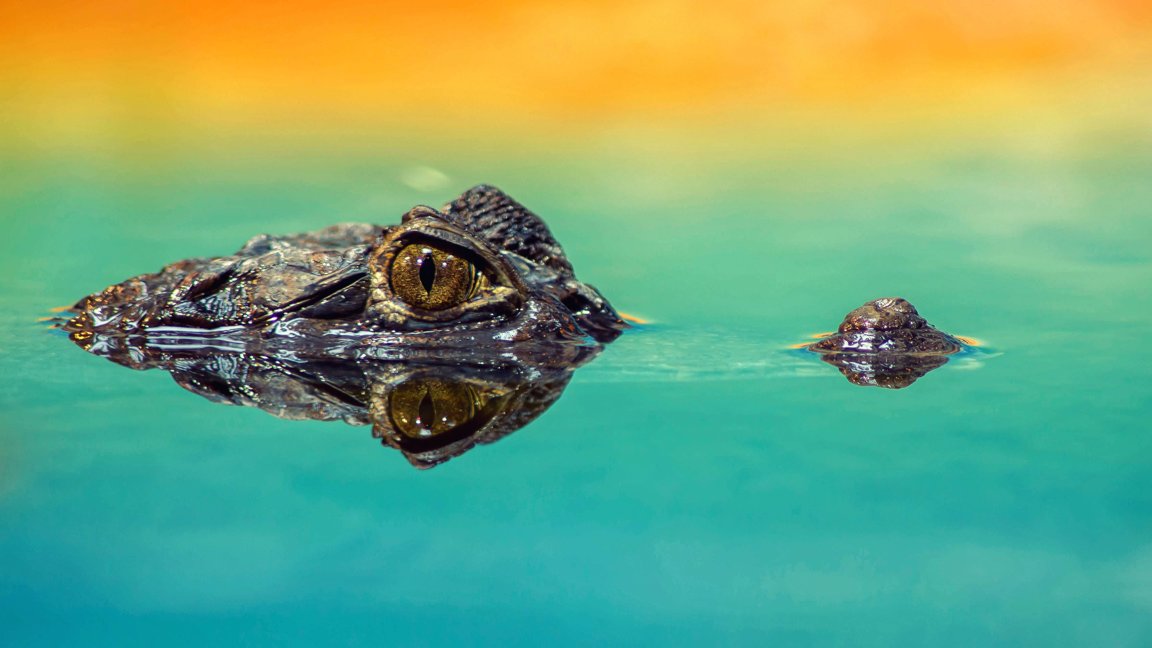 The aquatic biome includes habitats around the world dominated by water. Aquatic ecosystems are divided into two main groups based on their salinity—freshwater habitats and marine habitats.
The aquatic biome includes habitats around the world dominated by water. Aquatic ecosystems are divided into two main groups based on their salinity—freshwater habitats and marine habitats.● Freshwater habitats are aquatic habitats with low levels of salt, less than one percent. They include rivers, lakes, streams, ponds, swamps, wetlands, bogs and lagoons.
● Marine habitats are aquatic habitats with salt concentrations of more than one percent. They include oceans, seas and coral reefs.
Some habitats exist where saltwater and freshwater mix together. These include mud flats, mangroves and salt marshes. Aquatic ecosystems support a diverse assortment of animals including fishes, amphibians, reptiles, mammals, birds and invertebrates.
FRESHWATER HABITATS
When evaporated sea water falls as rain, it flows down mountain streams creating rivers and lakes. Rain water feeds freshwater rivers, which then flows back into the sea. Streams, rivers and lakes are home to countless animal species.
The two main types of freshwater habitat are rivers and lakes. Lakes are often fed by streams or rivers. They can also be enclosed areas where species live that are found nowhere else on the planet. Rivers usually contain large animals able to cope with strong currents, as well as animals such as crabs and birds that feed on the fish within the water.
Freshwater rivers provide habitat to a wide variety of species including fish, amphibians, reptiles, insects, birds and mammals. An extraordinary number of fish species inhabit streams and rivers.
Freshwater lakes are also home to a vast variety of wildlife. Some species spend their entire lives in one area. Others visit momentarily to eat and drink. Many species are specially adapted to life in particular lakes. Large mammals, including zebras, primates, giraffes and deer, visit lakes to drink.
Many freshwater habitats have been drastically affected by human activities. Chemicals and pesticides contaminate the water, as well as waste water. Animals and plants that inhabit the water can be affected, as are the animals that eat them.
OCEANS
Oceans create the largest habitat in the world. Countless animal species inhabit the planet's oceans which cover over 75% of the earth.
The two main types of ocean habitat are coastal, inshore habitats found around land, and open ocean habitats that stretch around the planet.
More animal species live in the rich, shallower waters than the deep sea, though animals live throughout the oceans.
The ocean landscape is as vast and varied as on land, featuring underwater continental shelves, mountains, valleys, volcanoes, trenches and plains.
Warmer, coastal waters around the globe are home to the majority of species. These areas feature more food sources than the deep ocean. Smaller aquatic animals often inhabit the shallower regions. Coastal waters provide them with a variety of places to hide, with fewer large predators. Larger animals tend to prefer deeper regions beneath the waves along the continental shelves.
Plankton -- microscopic plants and animals, fish eggs and animals in their larvae form -- provide a plentiful food source for many marine animals. Tiny fishes and crustaceans, to the largest animal on the planet, the blue whale, feed on this vital food source.
The two largest threats to ocean habitats are over-fishing and pollution. Pollution from the land and air accumulate in the sea with devastating effects to many plant and animal species. Over-fishing threatens many species with extinction.
CORAL REEFS
Coral reefs are the richest habitats on the earth. Found along the coastlines, they provide habitat to countless plant and animal species including fish, reptiles, invertebrates, echinoderms and crustaceans. Coral reefs are located in the tropical and sub-tropical coastal regions where it is always warm, day and night, year-round.
The two main types of coral reef habitats are soft coral reefs and hard coral reefs. Soft corals are animals that move through the water, eventually settling. Hard corals are the reef-building corals that are hard coral shells left behind when corals die.
The largest coral reefs are located along the south-west coast of Africa, in the Caribbean and all around Australia, south-east Asia and the coastal regions of the South Pacific Ocean.
So rich in life and biodiversity, coral reefs are home to an incredible variety animal species able to survive together with little competition for food. Animal species that inhabit coral reefs vary tremendously in shape, size and color. Sea urchins, starfish and crustaceans are invertebrates that call coral reefs home. Sea snakes hunt small fish and eels in the coral reefs. Eels and seahorses are among the many fish species. Sharks do not live permanently in coral reefs, but visit often in search of prey. Sea turtles also make frequent trips to coral reefs in search of food.
The threats to coral reefs and coastline wildlife include commercial fishing, pollution and storms. Dredging involves dragging fishing nets across the sea bed, destroying coral reefs in the process. Many animal species that inhabit coral reefs are on the brink of extinction. Sea storms, such as tsunamis, can also reek havoc on coral reef environments.
WETLANDS
Wetlands are found throughout the world, often in more temperate regions where vegetation grows quickly. These large areas of water contain a wealth of plants and are broken up by small islands of land. Wetlands include swamps, marshes, fens and bogs. Many wildlife species are specifically adapted to wetland environments, including fish, amphibians, birds, mammals, reptiles and insects.
The two main types of shallow watery areas are swamps and wetlands. Swamps are usually located in forested areas. Trees, such as mangrove trees, survive in salt-water conditions and require ample space for their roots. Wetlands are usually near large rivers or estuaries that flood when river banks burst from a lot of rain.
Mangrove swamps are one of the richest habitats on the planet. Numerous animals species live above and below the water's surface. Many animal species that live in mangrove forests are found nowhere else on earth. The mangrove tree's enormous roots provide shelter to small fishes, amphibians and reptiles and provide a way for the animals to get in and out of the water. Larger animals have ample fish to feed on.
Large aquatic birds such as heron spear fish with long beaks in wetland habitats. Salt-water swamps contain snapping turtles, crabs, crocodiles and alligators. Amphibians and reptiles inhabit the water's edge. Many insects live, and lay their eggs, in wetland habitats...providing food for frogs and lizards.
The main threats to wetlands are deforestation and pollution. The animals in wetland habitats are specifically adapted to their environment and are vulnerable to toxins in the water and air.
ISLANDS
Islands form when land breaks away from large land masses or volcanoes erupt on the sea floor. They are found throughout the world. Their isolated nature results in unique wildlife species, often different from their counterparts living in mainland habitats. Some island animal species have developed completely separately from mainland species.
Numerous habitats including forests, wetlands, deserts and tundra can be found on different islands. Limited in size and resources, ecosystems on islands are fragile and easily disturbed. Human activity and the introduction of new species on islands has caused much harm, making many species endangered or extinct. With nowhere else for them to go, the loss of habitat or food sources is particularly damaging to island animals.
Lemurs live only on the island of Madagascar, the tree kangaroo only in Papua New Guinea, the kiwi only in New Zealand and the orangutan only on the Indonesian islands of Borneo and Sumatra. Separated from the mainland, these species have adapted to their isolated environments. The kiwi and the kakapo birds have adapted to a flightless lifestyle since there were no large predators on the islands to flee from. The introduction of predators by humans threatens their survival. Orangutans suffer from mass deforestation in south-east Asia and the exotic pet trade.
A breaking point has been reached in conserving the fragile habitats of islands. Without immediate action to save these precious ecosystems, many species will be lost forever.
Oceans Are On The Verge Of Collapse
8 Apr, 2025
 The world’s oceans are on the verge of collapse. The overexploitation of fish has tripled since the 1970s, rapidly depleting the seas of fish. About 90 percent of the world’s fish have now been fully or overfished, and a 17 percent increase in production is expected by 2025, according to the UN Food and Agriculture Organization (FAO).
The world’s oceans are on the verge of collapse. The overexploitation of fish has tripled since the 1970s, rapidly depleting the seas of fish. About 90 percent of the world’s fish have now been fully or overfished, and a 17 percent increase in production is expected by 2025, according to the UN Food and Agriculture Organization (FAO).The UN's The State of World Fisheries and Aquaculture (SOFIA) says that the state of the world's marine “resources” is not improving. Almost a third of commercial fish stocks are now fished at biologically unsustainable levels, triple the level of 1974. Some 31.4 percent of the commercial wild fish stocks regularly monitored by FAO have been overfished.
The situation in the Mediterranean and Black Sea - where 59% of assessed stocks are fished at biologically unsustainable levels - is alarming. This is especially true for larger fish such as hake, mullet, sole and sea breams. In the Eastern Mediterranean, the possible expansion of invasive fish species associated to climate change is a concern.
Globally, fish provide 6.7 percent of all protein consumed by humans. Some 57 million people are engaged in the primary fish production sectors, a third of them in aquaculture.
Fishery products account for one percent of all global merchandise trade in value terms, representing more than nine percent of total agricultural exports.
The depletion of the oceans' fish starts with consumer demand. You can make a difference by eliminating your consumption of seafood. The average person can save 225 fish and 151 shellfish a year by cutting seafood from their diet.
What Is A Dead Zone?
7 Apr, 2025
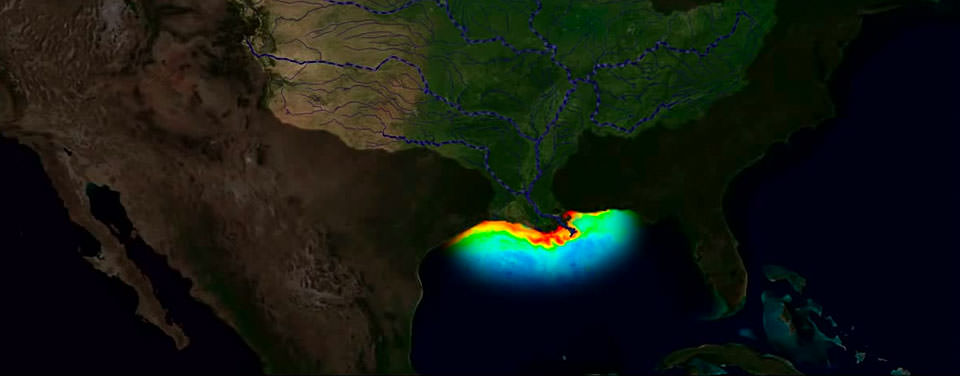 "Dead zone" is a more common term for hypoxia, which refers to a reduced level of oxygen in the water. Hypoxic zones are areas in the ocean of such low oxygen concentration that animal life suffocates and dies, and as a result are sometimes called "dead zones."
"Dead zone" is a more common term for hypoxia, which refers to a reduced level of oxygen in the water. Hypoxic zones are areas in the ocean of such low oxygen concentration that animal life suffocates and dies, and as a result are sometimes called "dead zones."One of the largest dead zones forms in the Gulf of Mexico every spring. Each spring as farmers fertilize their lands preparing for crop season, rain washes fertilizer off the land and into streams and rivers.
Less oxygen dissolved in the water is often referred to as a “dead zone” because most marine life either dies, or, if they are mobile such as fish, leave the area. Habitats that would normally be teeming with life become, essentially, biological deserts.
Hypoxic zones can occur naturally, but scientists are concerned about the areas created or enhanced by human activity. There are many physical, chemical, and biological factors that combine to create dead zones, but nutrient pollution is the primary cause of those zones created by humans.
Excess nutrients that run off land or are piped as wastewater into rivers and coasts can stimulate an overgrowth of algae, which then sinks and decomposes in the water. The decomposition process consumes oxygen and depletes the supply available to healthy marine life.
Dead zones occur in many areas, particularly along the East Coast, the Gulf of Mexico, and the Great Lakes, but there is no part of the world that is immune. The second largest dead zone in the world is located in the U.S., in the northern Gulf of Mexico.
Why Are They Called Fossil Fuels?
6 Apr, 2025
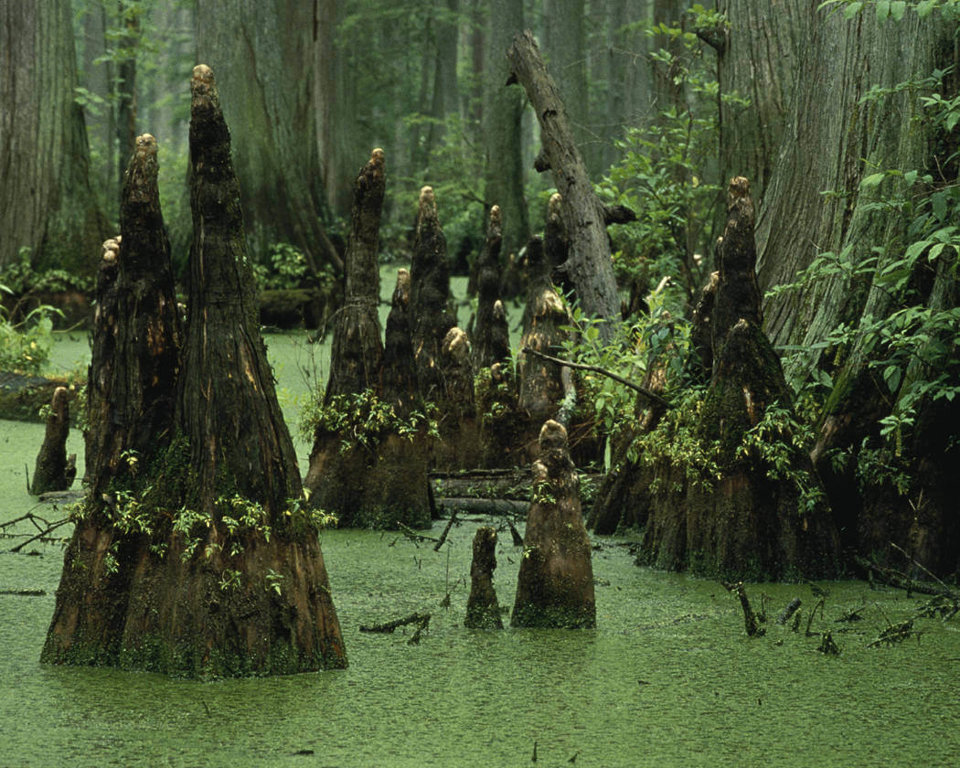 They're called fossil fuels because the fuel in your gas tank comes from the chemical remains of prehistoric plants and animals. All living things on Earth contain carbon. Even you contain carbon. Lots of it. If you weigh 100 pounds, 18 pounds of you is pure carbon. And plants are almost half carbon. You are 18 percent carbon. Plants are 45 percent carbon.
They're called fossil fuels because the fuel in your gas tank comes from the chemical remains of prehistoric plants and animals. All living things on Earth contain carbon. Even you contain carbon. Lots of it. If you weigh 100 pounds, 18 pounds of you is pure carbon. And plants are almost half carbon. You are 18 percent carbon. Plants are 45 percent carbon.With so much carbon, why isn't everything black and sooty? How can dogs be white and trees green? Because carbon, an element, combines easily with other elements to form new materials. The new stuff, called compounds, are quite different from pure carbon.
An atom is the tiniest possible particle of any element, like carbon or oxygen. A carbon atom combines easily with two oxygen atoms to make the compound carbon dioxide. "C" stands for carbon, "O" stands for oxygen, so carbon dioxide is often called "C-O-2, and written "CO2." CO2 is a gas. It is invisible. CO2 is really important.
How does carbon get into living things? Plants take in CO2. They keep the carbon and give away the oxygen. Animals breathe in the oxygen and breathe out carbon dioxide. Plants and animals depend on each other. It works out well. For hundreds of millions of years, plants and animals have lived and died. Their remains have gotten buried deep beneath Earth's surface. So for hundreds of millions of years, this material has been getting squished and cooked by lots of pressure and heat.
For hundreds of millions of years, dead plants and animals were buried under water and dirt. Heat and pressure turned the dead plants and animals into oil, coal, and natural gas.
So what happens to all this dead plant and animal stuff? It turns into what we call fossil fuels: oil, coal, and natural gas. This is the stuff we now use to energize our world. We burn these carbon-rich materials in cars, trucks, planes, trains, power plants, heaters, speed boats, barbecues, and many other things that require energy.
How does the carbon get out of living things? When fossil fuels burn, we mostly get three things: heat, water, and CO2. We also get some solid forms of carbon, like soot and grease. So that's where all the old carbon goes. All that carbon stored in all those plants and animals over hundreds of millions of years is getting pumped back into the atmosphere over just one or two hundred years.
Is carbon in the air good, bad, or just ugly? Here's the big, important thing about CO2: It's a greenhouse gas. That means CO2 in the atmosphere works to trap heat close to Earth. It helps Earth to hold on to some of the energy it gets from the sun so the energy doesn't all leak back out into space. If it weren't for this greenhouse effect, Earth's oceans would be frozen solid. Earth would not be the beautiful blue and green planet of life that it is. If not for the greenhouse effect, Earth would be an ice ball.
So, CO2 and other greenhouse gases are good—up to a point. But CO2 is so good at holding in heat from the Sun, that even a small increase in CO2 in the atmosphere can cause Earth to get even warmer.
Throughout Earth's history, whenever the amount of CO2 in the atmosphere has gone up, the temperature of Earth has also gone up. And when the temperature goes up, the CO2 in the atmosphere goes up even more.
Why Forests Matter
5 Apr, 2025
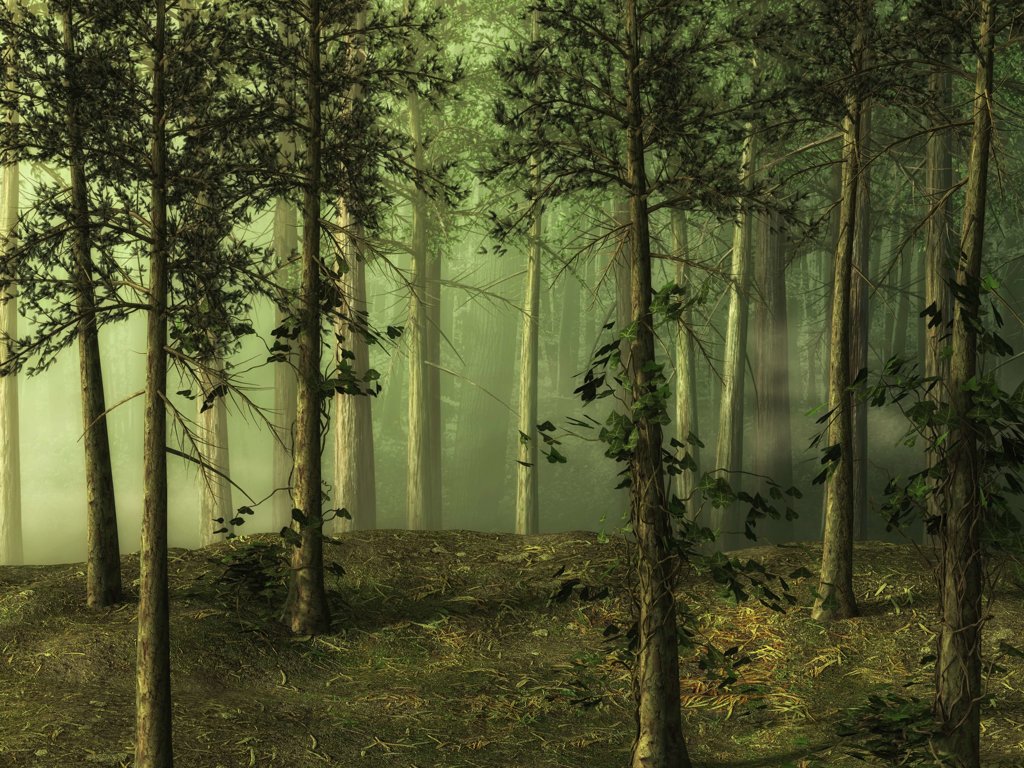 Many factors affect forests include logging, urban sprawl, human-caused forest fires, acid rain, invasive species, and the slash and burn practices of swidden agriculture or shifting cultivation. The loss and re-growth of forest leads to a distinction between two broad types of forest, primary or old-growth forest and secondary forest.
Many factors affect forests include logging, urban sprawl, human-caused forest fires, acid rain, invasive species, and the slash and burn practices of swidden agriculture or shifting cultivation. The loss and re-growth of forest leads to a distinction between two broad types of forest, primary or old-growth forest and secondary forest.There are also many natural factors that can cause changes in forests over time including forest fires, insects, diseases, weather, competition between species, etc. The World Resources Institute recorded that only 20% of the world's original forests remained in large, intact tracts of undisturbed forest. More than 75% of these intact forests lie in three countries - the boreal forests of Russia and Canada and the rainforest of Brazil.
Old-growth forests contain mainly natural patterns of biodiversity in established seral patterns, and they contain mainly species native to the region and habitat. The natural formations and processes have not been affected by humans with a frequency or intensity to change the natural structure and components of the habitat. Secondary forest contains significant elements of species which were originally from other regions or habitats.
Smaller areas of woodland in cities may be managed as Urban forestry, sometimes within public parks. These are often created for human benefits.
Rainforests
Rainforests are forests characterized by high rainfall, with definitions based on a minimum normal annual rainfall of 68 to 78 inches. The monsoon trough, alternatively known as the intertropical convergence zone, plays a significant role in creating the climatic conditions necessary for the earth's tropical rainforests.
Rainforests cover 2% of the earth's surface, or 6% of its land mass. They originally covered at least twice that area. Tropical rainforests are the earth's oldest living ecosystems. Fossil records show that the forests of Southeast Asia have existed in more or less their present form for 70 to 100 million years.
Around 40% to 75% of all biotic species are indigenous to the rainforests. It has been estimated that there may be many millions of species of plants, insects and microorganisms still undiscovered in tropical rainforests.
Tropical rainforests have been called the "jewels of the earth" and the "world's largest pharmacy", because over one quarter of natural medicines have been discovered there. Rainforests are also responsible for 28% of the world's oxygen turnover, processing it through photosynthesis from carbon dioxide and storing it as carbon through biosequestration.
The undergrowth in a rainforest is restricted in many areas by the poor penetration of sunlight to ground level. This makes it easy to walk through undisturbed, mature rainforest. If the leaf canopy is destroyed or thinned, the ground beneath is soon colonized by a dense, tangled growth of vines, shrubs and small trees, called a jungle.
There are two types of rainforest, tropical rainforest and temperate rainforest.
Tropical rainforests are rainforests in the tropics, found in the equatorial zone (between the Tropic of Cancer and Tropic of Capricorn). Tropical rainforests are present in Southeast Asia (from Myanmar (Burma) to Philippines, Indonesia, Papua New Guinea and northeastern Australia), Sri Lanka, sub-Saharan Africa from Cameroon to the Congo (Congo Rainforest), South America (e.g. the Amazon Rainforest), Central America (e.g. Bosawás, southern Yucatán Peninsula-El Peten-Belize-Calakmul), and on many of the Pacific Islands (such as Hawai).
Temperate rainforests are rainforests in temperate regions. They occur in North America (in the Pacific Northwest, the British Columbia Coast and in the inland rainforest of the Rocky Mountain Trench east of Prince George), in Europe (parts of the British Isles such as the coastal areas of Ireland and Scotland, southern Norway, parts of the western Balkans along the Adriatic coast, as well as in the North West of Spain and coastal areas of the eastern Black Sea, including Georgia and coastal Turkey), in East Asia (in southern China, Taiwan, much of Japan and Korea, and on Sakhalin Island and the adjacent Russian Far East coast), in South America (southern Chile) and also in Australia and New Zealand.
More than half of the world's species of plants and animals are found in the rainforest. Rainforests support a very broad array of fauna, including mammals, reptiles, birds and invertebrates. Mammals may include primates, felids and other families. Reptiles include snakes, turtles, chameleons and other families; while birds include such families as vangidae and Cuculidae. Dozens of families of invertebrates are found in rainforests. Fungi are also very common in rainforest areas as they can feed on the decomposing remains of plants and animals. Many rainforest species are rapidly disappearing due to deforestation, habitat loss and pollution of the atmosphere.
On January 18, 2007, FUNAI reported also that it had confirmed the presence of 67 different uncontacted tribes in Brazil. The province of Irian Jaya or West Papua in the island of New Guinea is home to an estimated 44 uncontacted tribal groups. The tribes are in danger because of the deforestation, especially in Brazil. Central African rainforest is home of the Mbuti pygmies, one of the hunter-gatherer peoples living in equatorial rainforests characterized by their short height (below 59 inches, on average).
Tropical and temperate rainforests have been subjected to heavy logging and agricultural clearance throughout the 20th century and the area covered by rainforests around the world is shrinking. Biologists have estimated that large numbers of species are being driven to extinction, possibly more than 50,000 a year. A quarter or more of all species on earth could be exterminated within 50 years due to the removal of habitat with destruction of the rainforests. Four-fifths of the nutrients in the rainforests are in the vegetation. This means that the soils are nutrient-poor and become eroded and unproductive within a few years after the rainforest is cleared.
Another factor causing the loss of rainforest is expanding urban areas. Littoral rainforest growing along coastal areas of eastern Australia is now rare due to ribbon development to accommodate the demand for seachange lifestyles.
The forests are being destroyed at a rapid pace. Almost 90% of West Africa's rainforest has been destroyed. Since the arrival of humans 2000 years ago, Madagascar has lost two thirds of its original rainforest. At present rates, tropical rainforests in Indonesia will be logged out in 10 years and Papua New Guinea in 13 to 16 years. All the primary rainforests in India, Bangladesh, Sri Lanka and Haiti have been destroyed already. The Ivory Coast rainforests have been almost completely logged. The Philippines lost 55% of its forest between 1960 and 1985; Thailand lost 45% of its forest between 1961 and 1985.
Rainforests support 90,000 of the 250,000 identified plant species. Scientists estimate that there are at least 30,000 as yet undiscovered plants, most of which are rainforest species. A typical four square mile patch of rainforest contains as many as 1,500 species of flowering plants, 750 species of trees, 125 mammal species, 400 species of birds, 100 of reptiles, 60 of amphibians, and 150 different species of butterflies. In one study, one square meter of leaf litter, when analyzed, turned up 50 species of ants alone.
Many of the foods we eat today originated in rainforests: avocado, banana, black pepper, Brazilian nuts, cayenne pepper, cassava/manioc, cashews, chocolate/ cocoa, cinnamon, cloves, coconut, coffee, cola, corn/maize, eggplant, fig, ginger, guava, herbal tea ingredients (hibiscus flowers, orange flowers and peel, lemon grass), jalapeño, lemon, orange, papaya, paprika, peanut, pineapple, rice, winter squash, sweet pepper, sugar, tomato, turmeric, vanilla, and Mexican yam. The wild strains still in the rainforests of many of these plants provide genetic materials essential to fortify our existing agricultural stock. Many other rainforest plants have great promise to become other staple foods.
The uneven distribution of wealth and land is one major factor in the destruction of tropical forests. The World Bank estimates that of the 2.5 billion people now living in the tropics one billion exist in absolute poverty.
Tropical Forests Overexploited By Logging
4 Apr, 2025
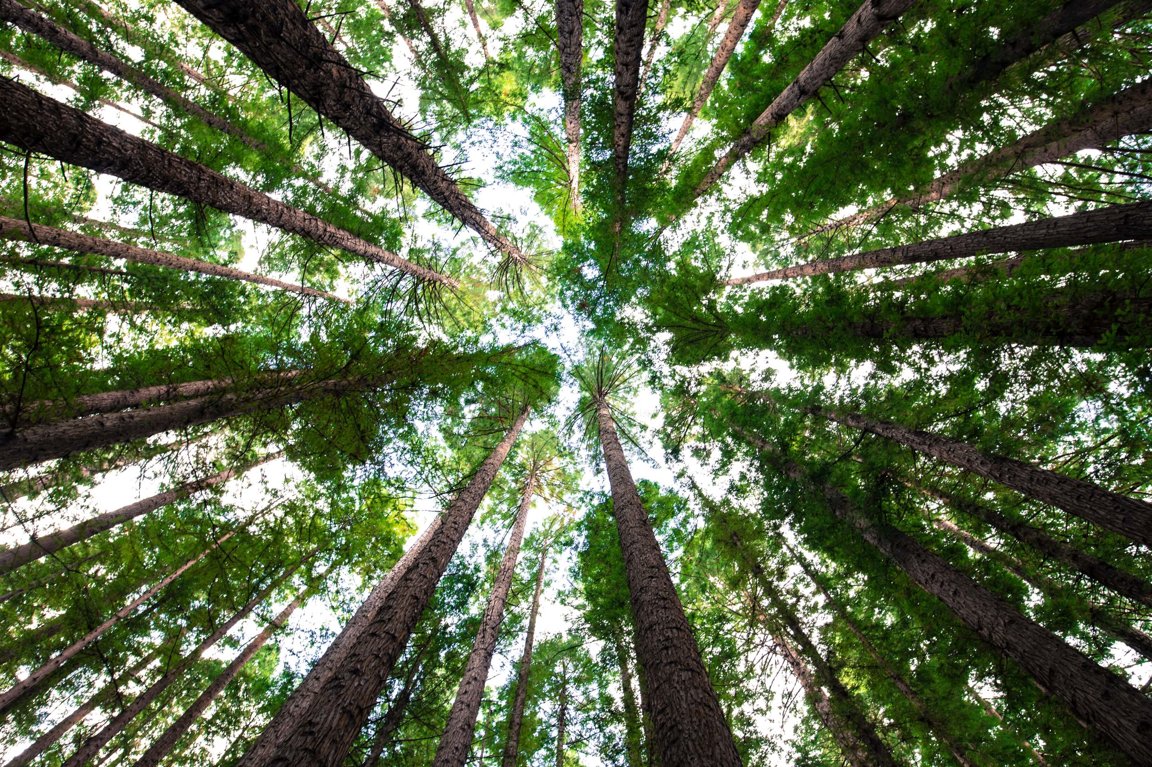 Widely hailed as a renewable natural resource, tropical timber from old-growth
tropical forests is selectively logged worldwide at an unprecedented scale. But
research now reveals that these sources of timber are far from sustainable and
environmentally friendly.
Widely hailed as a renewable natural resource, tropical timber from old-growth
tropical forests is selectively logged worldwide at an unprecedented scale. But
research now reveals that these sources of timber are far from sustainable and
environmentally friendly.Studies reveal that once prime tropical hardwoods – such as Brazilian cedars, ipe
(Brazilian walnut), and rosewood – have been logged, they do not grow back to
commercial levels and are at risk from disappearing altogether.
Slow growing and "commercially valuable" species of all kinds have been overexploited
over the course of human history – just look at the whaling industry or fisheries.
Yet many tropical timber species are still thought of as a renewable resource.
We are only beginning to see over-exploitation parallels in tree species. Many
high-value timber species are logged until their populations collapse altogether.
Timber harvests in Pará equate to almost half of all native forest roundlog production
in Brazilian Amazonia – the largest old-growth tropical timber reserve controlled
by any country. Brazil accounts for 85 percent of all native neotropical forest
roundlog production. Researchers have found that loggers can no longer depend
on areas where high-value species were formerly abundant to fetch high economic
returns. This means that logging operations are continuously forced to extract
timber trees from new areas of unlogged primary forests.
Even so-called ‘reduced-impact logging’ in tropical forests can rarely be defined
as sustainable in terms of forest composition and dynamics in the aftermath of
logging – never mind the greater susceptibility of logged forests to catastrophic
fires. Environmental licensing and market certification of logging concessions
need to take this into account, and review minimum preconditions in terms of
volumetric quotas of roundlogs harvested per species and regeneration standards
over multi-decade logging cycles.
After selective logging, there is no evidence that the composition of timber species
and total forest value recovers beyond the first-cut. The most commercially-valuable
timber species become predictably rare or economically extinct in old logging
frontiers.
Only recent logging operations, which are furthest away from heavy-traffic roads,
are the most selective, concentrating gross revenues on a few high-value species.
Managing yields of selectively-logged forests is crucial for the long-term integrity
of forest biodiversity and financial viability of local industries.
Current commercial agreements could lead to ‘peak timber’ and then widespread economic
extinctions across other tropical regions. We can already see a market shift,
in which loggers in old depleted logging Amazonian frontiers are forced to depend
on fast growing, soft-wood timber species.
Save The Earth
3 Apr, 2025
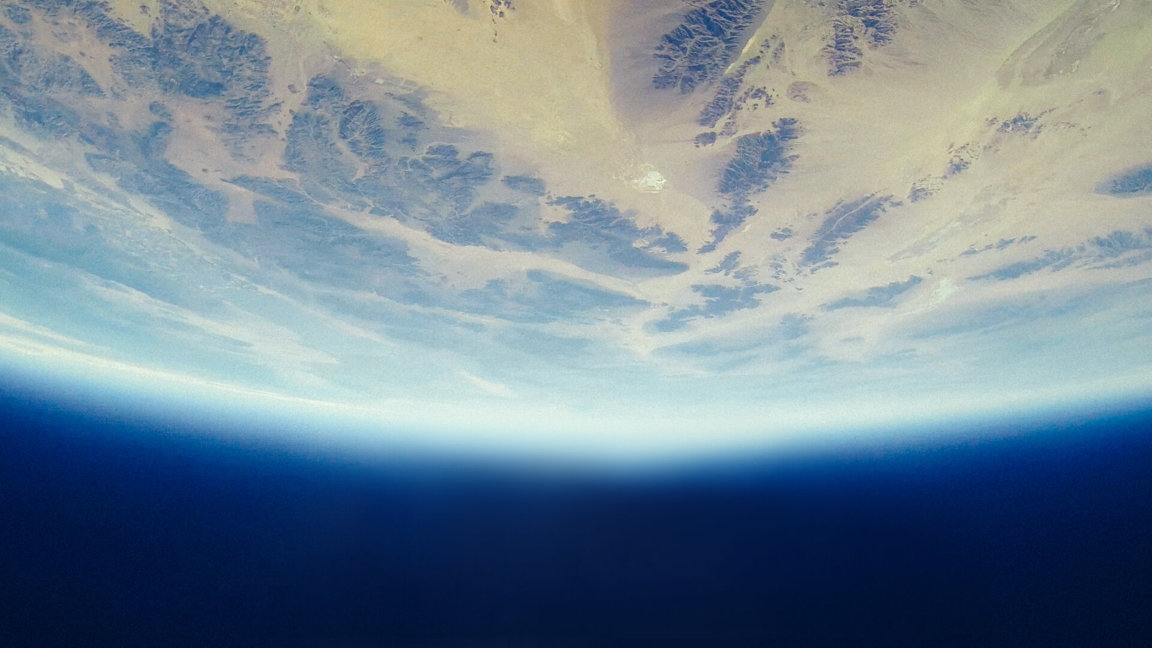 Our planet has a natural environment, known as ‘ecosystem’, which includes all humans, animals, plants, land and water. Human activities have caused much depletion and destruction of this ecosystem.
Our planet has a natural environment, known as ‘ecosystem’, which includes all humans, animals, plants, land and water. Human activities have caused much depletion and destruction of this ecosystem.Environmentalism advocates the preservation, restoration and/or improvement of this natural environment by controlling pollution and protecting plant and animal diversity. Environmentalists attempt to balance relations between humans and the various natural systems on which they depend to achieve sustainability.
Earth advocates work to protect natural resources and ecosystems through education, activism and the political process. They seek to give the natural world a stronger voice in human affairs.
The environmental issues of today know no borders. We can't just put up fences around natural places to keep humans out. We must protect the entire planet for the survival of all species — plants, animals and people. Governments, businesses, communities and individuals must make better decisions to live in balance with nature. Through science, responsible planning, legislation and daily choices, we can ensure the survival of the ecosystem.
There are many ways you can help to save wild places and wild animals. Volunteer. Recycle. Install solar panels on your roof. Organize an event where you live. Change a habit. Help launch a community garden. Communicate your priorities to your elected representatives. The possibilities are endless! Do something nice for the earth, have fun, meet new people, and make a difference.
ENVIRONMENTAL ISSUES
LAND
The world population is expected to reach 9 billion by 2050. As our population increases, there is even more pressure on forests, grasslands, deserts and other natural areas to provide food, housing and energy for humans. These demands increase the stress of already fragmented natural areas suffering from pollution, deforestation, disrupted migratory routes and changing environmental conditions.
Already, large numbers of people have been declared food-insecure; resulting in a land rush with nations hurrying to secure properties for agriculture and fuel crops. Forests are being cleared at alarming rates, an estimated 18 million acres each year. At the same time, poor agriculture practices lead to millions of acres of land lost annually through soil erosion and land degradation.
Trillions of tons of garbage is produced every year, while more and more goods are produced...resulting in the creation of more waste. Most garbage is buried underground in landfill sites, causing environmental and health concerns.
If we don’t make changes now, future generations will not experience the same plentiful, diverse planet that we know today.
AIR
Air pollution is a mixture of solid particles and gases in the air. Car emissions, chemicals from factories, dust, pollen and mold spores may be suspended as particles. Ozone, a gas, is a major part of air pollution in cities. When ozone forms air pollution, it's also called smog.
Air pollution is caused by polluters who refuse to clean up toxic air emissions, despite proven pollution control technologies. Most air toxics originate from human-made sources, including automobiles, factories, refineries and power plants. Indoor sources include building materials and cleaning solvents.
As the environment suffers, humans suffer from asthma, lung disease, heart ailments, cancer and shortened lives. Acid rain, often caused by pollutants in the atmosphere from automobile or industrial processes, falls from the sky in the form of rain, snow, fog or dry material. Devastating effects to forests, aquatic systems, buildings and human health can result. Air toxics then contaminate our food products, drinking water and soil.
WATER
Pollution, habitat fragmentation and destruction, and overfishing are having devastating effects on our oceans, rivers and lakes. Acidification, caused by increased carbon emissions, degrade coral reefs and corrode the shells of sea creatures. Freshwater ecosystems provide us with drinking water, food, energy and recreation. These ecosystems are also critical to plants and animals. Increased demands for food, energy and material goods have placed unprecedented pressure on these fragile environments. Within the next 20 years, half of the world’s population may face water shortages.
Oceans are a critical part of the earths support system. Acid rain pollutes our seas. Oceans are degraded by spills and chemical runoffs. The largest living structures on earth, coral reefs, are among the greatest storehouses of biodiversity on the planet. Up to 70 percent of coral reefs are expected to be lost by 2050 due to human activities.
Water is under threat from fertilizers and chemical runoff, dumped chemical and industrial wastes, untreated sewage and medicinal residues.
GENETIC ENGINEERING
Genetic modification of plants and animals is a controversial subject, with many experts believing the ill impacts far outweigh the benefits to mankind. Manipulating plant DNA to produce super crops is a dangerous global experiment. When released into the environment, they cannot be recalled.
Genetically modified organisms (GMOs) can spread through nature and interbreed with natural organisms. They can contaminate natural environments in an unforeseeable and uncontrollable way. This is referred to as 'genetic pollution', a major threat to the environment.
Due to commercial interests, the public has been denied the facts about GMO ingredients in the food chain. The absence of labeling laws in many countries denies individuals the power to avoid them.
Biological diversity must be protected and respected. It is fundamental to our planet's survival.
Feral Cats Are Not To Blame
2 Apr, 2025
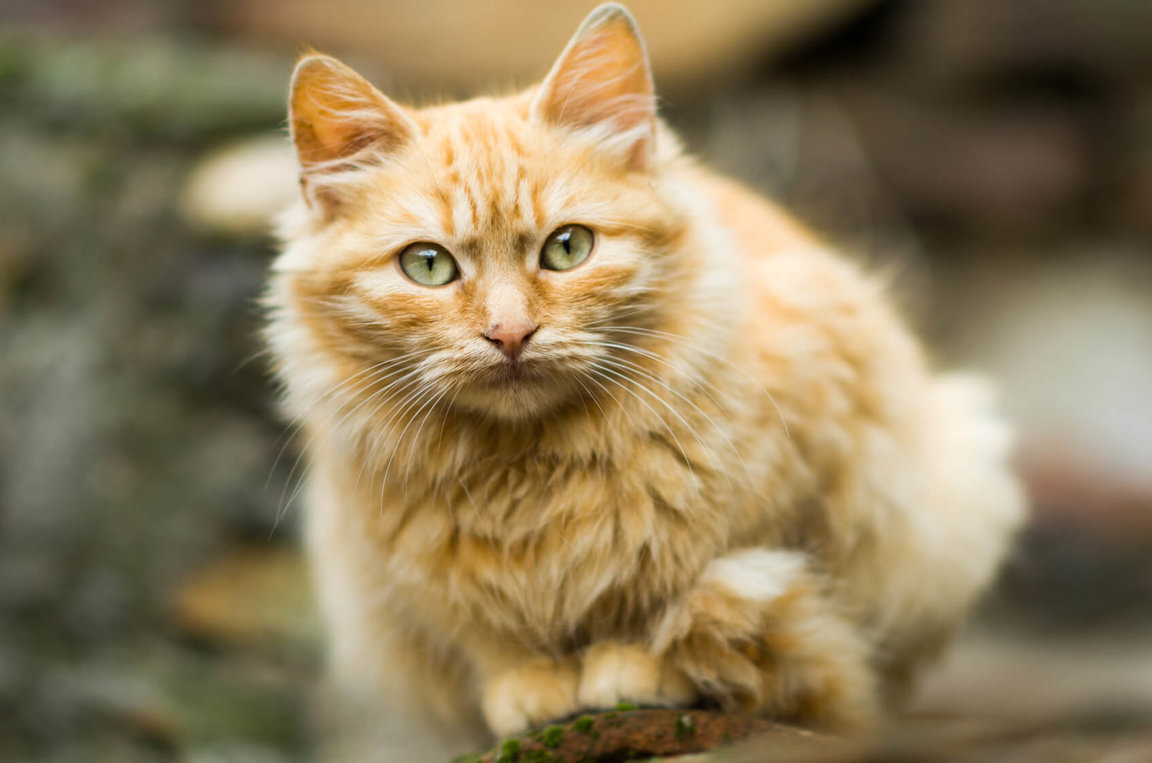 While some wildlife groups may use media attention to speculate that cats are causing species loss, leading biologists, climate scientists, and environmental watchdogs all agree: endangered species’ fight for survival rests in our own hands.
While some wildlife groups may use media attention to speculate that cats are causing species loss, leading biologists, climate scientists, and environmental watchdogs all agree: endangered species’ fight for survival rests in our own hands.Focusing on cats diverts attention from the far more dangerous impact of humans. Too many media stories sidestep these realities to focus on sensational issues like cats’ imagined impact on birds. But cats have been a natural part of the landscape for over 10,000 years—that has not changed. What has changed in that time is how we have re-shaped the environment to suit 21st century human needs—at a great cost to the other species that share our ecosystem. Our direct impact on our environment is without a doubt the number one cause of species loss.
Make no mistake—habitat loss is the most critical threat to birds. With this exponential human population growth comes massive use of natural resources and rampant development: industrial activity, logging, farming, suburbanization, mining, road building, and a host of other activities. The impact on species from habitat destruction, pollution, fragmentation, and modification is alarming. According to the World Watch Institute, “people have always modified natural landscapes in the course of finding food, obtaining shelter, and meeting other requirements of daily life. What makes present-day human alteration of habitat the number one problem for birds and other creatures is its unprecedented scale and intensity.”
Human activities are responsible for up to 1.2 billion bird deaths every year. Nearly 100 million birds die annually from collisions with windows; 80 million from collisions with automobiles; 70 million from exposure to pesticides. Millions of birds are intentionally killed by U.S. government-sponsored activities each year.
The human population continues to grow, threatening other species. Exponential population growth has left little land untouched by human development. In America alone, the population grew by 60 million people between 1990 and 2010, and experts predict we will add 23 million more people per decade in the next 30 years. That kind of growth—the equivalent of adding another California and another Texas to our already teeming population—is unprecedented in American history.
Killing cats will not save wildlife. Studies have shown cats to be mainly scavengers, not hunters, feeding mostly on garbage and scraps. When they do hunt, cats prefer rodents and other burrowing animals. Studies of samples from the diets of outdoor cats confirm that common mammals appear three times more often than birds. Additionally, scientists who study predation have shown in mathematical models that when cats, rats, and birds coexist, they find a balance. But when cats are removed, rat populations soar and wipe out the birds completely.
Some wildlife organizations and media outlets continue to quote scientific studies that have been proven inaccurate. A careful analysis of the science concludes there is no strong support for the viewpoint that cats are a serious threat to wildlife.
Although human civilization and domestic cats co-evolved side by side, the feral cat population was not created by humans. Cats have lived outdoors for a long time. In the thousands of years that cats have lived alongside people, indoor-only cats have only become common in the last 50 or 60 years—a negligible amount of time on an evolutionary scale. They are not new to the environment and they didn’t simply originate from lost pets or negligent animal guardians. Instead, they have a place in the natural landscape.
Prairie Grasslands: Lungs Of A Nation
1 Apr, 2025
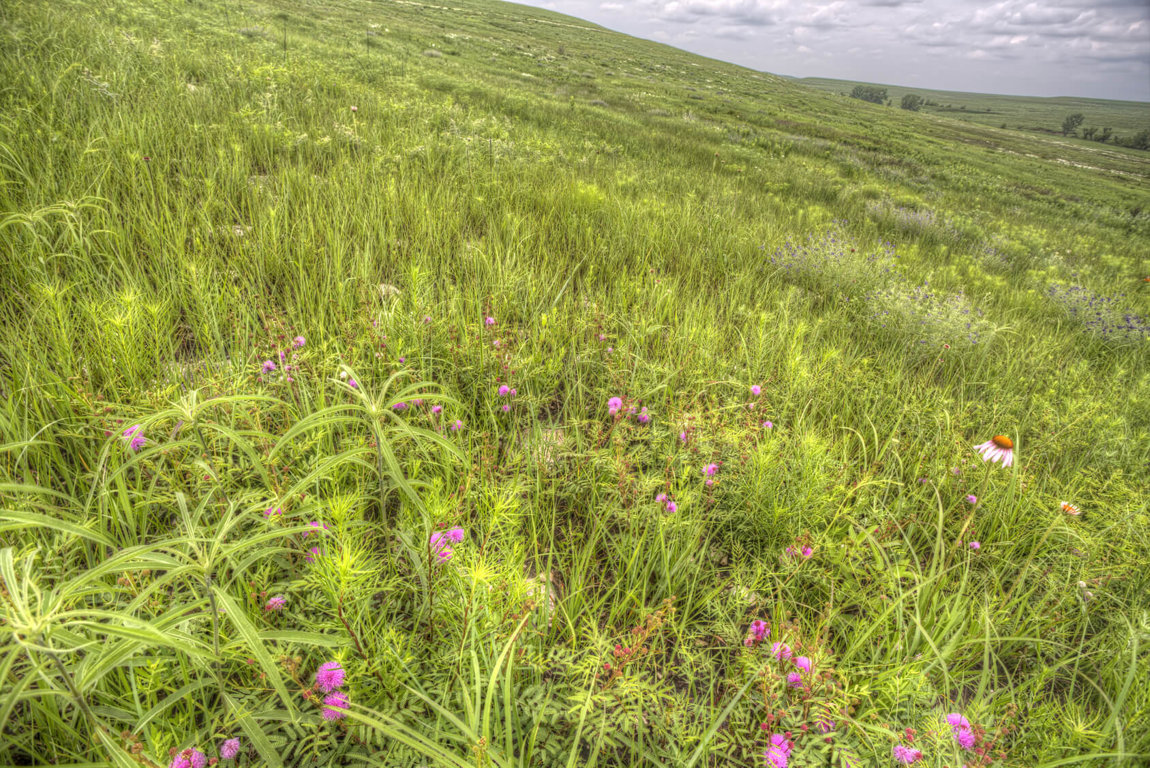 No other ecosystem in America removes as much carbon from the atmosphere as prairie grasslands. Some carbon that is produced by our giant industrial complex is recycled into the fertile soils that have become a breadbasket for the entire world.
No other ecosystem in America removes as much carbon from the atmosphere as prairie grasslands. Some carbon that is produced by our giant industrial complex is recycled into the fertile soils that have become a breadbasket for the entire world.The rolling acres of grassland stretching across the center of the United States are a classic American image. Early European settlers of this eco-region were so impressed by these endless grasslands that they compared them to the ocean, and named their wagons "prairie schooners" after large ships of the time. Less than 4 percent of this once vast prairie grassland survives today.
It is fascinating to note that 80% of prairie plant life is underground. Long tentacled root systems survive grazing, fire and flood to sprout each spring and renew an amazing cycle of life that, due to its low lying subtlety, is often over looked.
The prairie grasslands begin with the Great Plains at the eastern edge of the Rocky Mountains and extend all the way to the Appalachian Mountains in the eastern part of the country. The Rocky Mountains prevent moist air from moving over the Great Plains, and this "rain shadow" helps to keep the prairie grasslands extremely dry. However, it is not just the lack of rain that makes the prairie a harsh place to live. Twelve thousand years ago, retreating glaciers left behind a flat landscape open to extreme heat in the summer and extreme cold in the winter. The lack of geographic barriers or cover means that the wind runs rampant across the plains, leading to the "black blizzards" of the 1930s Dust Bowl and continuously endangering agriculture.
Despite these extremes, many plants and animals such as wildflowers, pronghorn antelope, mule deer, prairie dogs, and coyotes make their homes in the prairie grasslands. In addition, small, isolated wetlands dot the dry prairies, providing much-needed water and aquatic habitat for birds.
In the Northern Great Plains, these wetlands formed as the glaciers receded and left round, sunken areas behind them. Rain and groundwater fill these depressions during certain times of year, creating scattered wetland habitat known as "prairie potholes."
The Prairie Pothole Region in the Northern Great Plains contains 5-8 million small wetlands and some of the most important freshwater resources in North America. Bullrushes, sedges, and cattails grow on the edges of these potholes because they prefer standing water, and these plants in turn provide food and shelter for other species, such as birds. More than half of the migratory waterfowl in North America depend on prairie potholes for their survival.
THREATS TO PRAIRIE GRASSLANDS
Human activity has damaged many Great Plains habitats, primarily through agricultural and livestock activity in the region. For example, only 40-50% of the original prairie pothole wetlands remain intact and undrained today.
Climate change will affect the prairie grasslands ecoregion by pushing temperatures higher and decreasing rainfall in certain areas. Climate records reveal that while the average annual temperatures in the United States have increased about 1°F (0.6°C) over the past hundred years, average temperatures on the central and northern Great Plains have risen by at least 2°F (1.1°C). In some areas, such as North and South Dakota and portions of Montana, average temperatures have increased as much as 5.5°F (3.1 °C).
In addition to rapidly rising temperatures, patterns of rainfall have changed over the same time period so that the eastern areas of Montana, Wyoming, and Colorado have suffered a decrease in precipitation of 10%. Climate models predict that this increased drought in some areas will cause wetlands to relocate or disappear. Climate change will challenge wetlands in particular, because most wetlands in the plains occur where the effects of climate change are predicted to be most severe. These findings imply that climatically drier portions of the Prairie Pothole Region, including areas that migratory birds rely on, are especially vulnerable. However, higher temperatures and decreased precipitation will make life harder for the entire region.
US Government Killing 5500 Animals Every Day
31 Mar, 2025
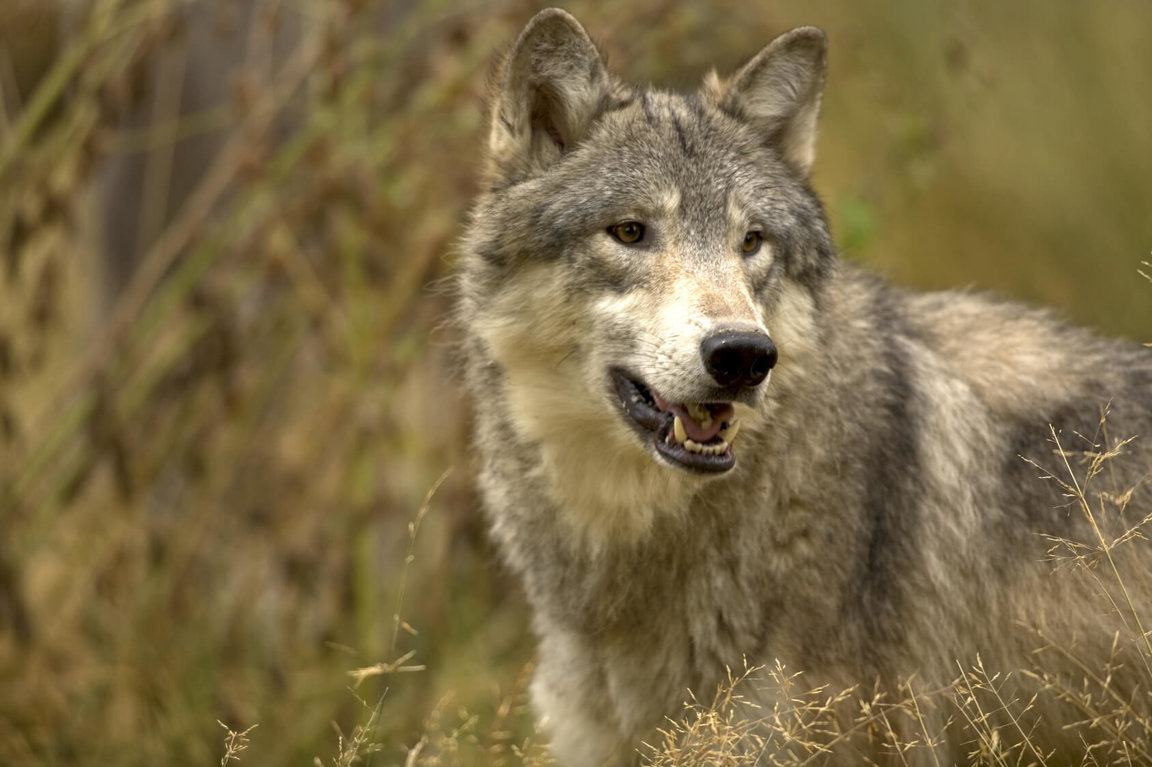
5,500 animals a day, 228 an hour, 4 every minute - red-tailed hawks, Arctic foxes and river otters, some of America's most magnificent wildlife....By the time you finish reading this, 8 more of these wild animals will have been gunned down, crushed in traps, or poisoned by an exploding cyanide landmine laid down by the USDA's rogue animal-killing program, Wildlife Services.
This little-known agency, a unit of the U.S. Department of Agriculture, is secretive for a reason: Its actions are incredibly, unacceptably and illegally brutal and inhumane to animals, from familiar wildlife to endangered species - and even people’s companion animals.
This agency has been killing as many as 3 million native animals every year - including coyotes, bears, beavers, wolves, otters, foxes, prairie dogs, mountain lions, birds and other animals - without any oversight, accountability or requirement to disclose its activities to the public. The agency contributed to the decline of gray wolves, Mexican wolves, black-footed ferrets, black-tailed prairie dogs, and other imperiled species during the first half of the 1900s, and continues to impede their recovery today.
No other government program does more every day to annihilate America’s wildlife than Wildlife Services. This rogue program does much of its dirty work far from the public’s view, so millions of animals disappear from our landscapes every year with little accountability.
Most of Wildlife Services’ killing is done on behalf of the livestock and agriculture industries, along with other powerful interests. The methods are gruesome, including aerial gunning, traps and exploding cyanide caps. Companion animals have also been inadvertently harmed.
Many of these animals are carnivores at the top of the food chain and have a tremendous benefit to overall ecosystem health. They include endangered species and, largely, animals that agribusiness interests consider undesirable - as well as many animals that aren’t intended targets of the agency.
The century-old Wildlife Services - which has reportedly killed 32 million native animals since 1996 - destroys these creatures on behalf of such interests without explaining to the public what it’s doing or where, the methods it’s using, on whose behalf it’s acting, or why. It frequently doesn’t even attempt to use nonlethal methods before shooting coyotes and wolves from airplanes, or laying out traps and exploding poison caps indiscriminately - including in public areas - without any rules.
Stories about Wildlife Services consistently emerge describing an agency that routinely commits extreme cruelty against animals, leaving them to die in traps from exposure or starvation, attacking trapped coyotes, and brutalizing domestic dogs. Many people who know about the agency have criticized this dark, secretive entity as a subsidy for livestock interests.
As the actions of Wildlife Services continue to be exposed, organizations and individuals across the country continue to join together in an effort to end the inhumane slaughter of millions of animals each year by the federal government with taxpayers' money.
Preserving & Protecting
27 Jan, 2025
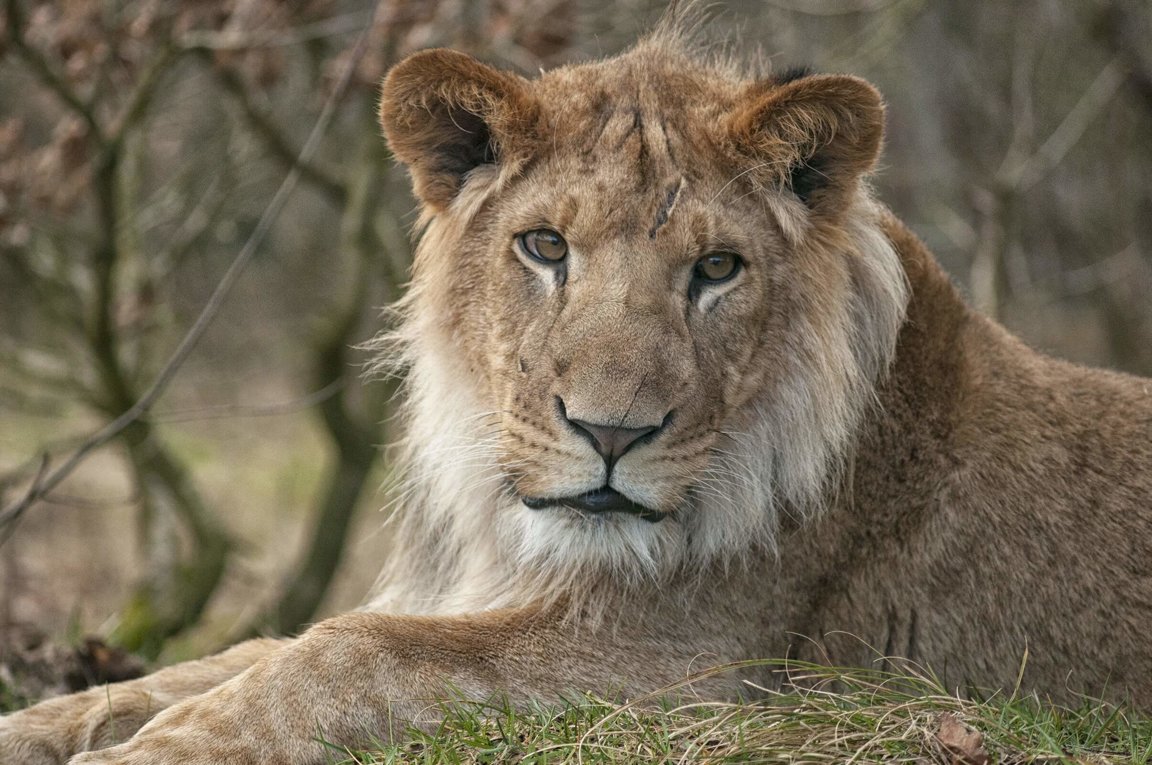 Conservation is the protection of things found in nature, including species, their habitats and ecosystems. It encourages the sensible use of the planet’s natural resources so they do not go extinct, and promotes keeping the environment clean and healthy.
Conservation is the protection of things found in nature, including species, their habitats and ecosystems. It encourages the sensible use of the planet’s natural resources so they do not go extinct, and promotes keeping the environment clean and healthy.The rapid decline of established biological systems around the world means that conservation biology is often referred to as a "Discipline With a Deadline" - we must act before it is too late.
Conservation is classified as either on-site conservation, which is protecting an endangered species in its natural habitat, or off-site conservation, which occurs outside of their natural habitat.
● In-situ (on-site) conservation involves protecting or cleaning up the habitat or defending the species from predators.
● Ex-situ (off-site) conservation may be used when in-situ conservation is too difficult or impossible. Animals may be removed from a threatened habitat and placed in a new location, which may be a wild area or within the care of humans.
Non-interference may also be used, which is called preservation.
Preservationists advocate for giving areas of nature and species a protected existence without interference from the humans. In this regard, conservationists differ from preservationists, as conservation engages society to seek solutions for both people and ecosystems.
Environmentalism advocates the preservation, restoration and/or improvement of the natural environment, and seeks to control pollution and protect plant and animal diversity.
Animal advocates believe humans have a moral responsibility to treat animals with respect, and that the interests of humans and animals should be considered equally.
ECOLOGY: PRESERVING BIODIVERSITY
Ecology is the relationship of living things to each other and what is around them. It includes not only how those living things interact with each other, but how they interact with their physical environment, such as soil, water and climate.
Scientists who study ecology are called ecologists. They learn about living things by observing, seeing what happens, then recording what they find - all part of the scientific method.
Some ecologists study a specific habitat or species. They might study the behavior of a certain type of animal to learn how it interacts with the environment or other organisms. Or they may study many different species that depend on, or compete with, each other. What ecologists learn from their observations helps us to preserve biodiversity.
BIODIVERSITY: THE VARIETY OF LIFE
Biodiversity refers to the all the variety of life on the planet, or the total variety of life in a certain area. It includes all the different species of plants, animals, fungi, and even microorganisms and bacteria on earth or a given area.
Biodiversity takes into account the similarities and differences among individuals of the same species, and includes communities of plants and animals that interact together.
We don’t know the total number of species in our world, but there are tens of thousands of species of plants and animals discovered so far, and more being discovered everyday.
Conserving animals and plants is important for the benefit of humans and the benefit of other species. Individual species help meet our basic needs, including providing materials for food, clothing, shelter and fuel. Plants produce the oxygen we need to breathe, and are the source of many medicines. Insects pollinate crops and control pest populations. Birds, reptiles, frogs and amphibians control insect and other animal populations. Microorganisms decompose waste and recycle nutrients. Biodiversity also provides us with recreation and contributes to our physical, mental and spiritual well being. Every species contributes to our world in its own unique way. Loosing any one species affects the balance of nature.
Threats to Biodiversity
Human activities on earth in the last century have led to an enormous amount biodiversity loss, which continues to increase. The number of plants and animals becoming extinct exceed those of prehistoric mass extinctions. Loss of biodiversity also leads to genetic diversity loss and a loss of ecosystems.
The biggest threats to biodiversity include:
● Pollution: Despite efforts to reduce pollution, pesticides, acid rain, fertilizers and other pollution continue to change the chemical balance of ecosystems, negatively affecting plants and animals.
● Habitat Destruction, Alteration and Fragmentation: The biggest cause in decline of species populations is loss of habitat. Development, wetland filling and other ecologically irresponsible activities reduce and fragment forests, grasslands, deserts and wetland habitats into areas too isolated and too small to support some animals.
● Invasive Species: The spread of invasive, non-native species also changes the composition of wildlife and wild lands, reducing or replacing native plants and animals.
● Illegal Collection and Hunting: Many animals are poached and collected for the pet trade. Commercial hunting has decimated species populations, and led to the extinction of some animals. Fish are threatened by overharvesting.
● Changes in Climate: Changes in the earth’s climate can be difficult for some species to adapt to, eventually leading to extinction.
